ALL 102 VIOLIN BOWING Techniques and Terms with Examples and Symbols
Learn ALL violin bow strokes: detaché, martelé, spiccato, ricochet, staccato and much moreThe more you learn about violin bow technique,
the more free you are to express yourself in music
Always remember violin playing is a form of art. Don’t see these bowing techniques black and white. You can do everything in between. Search for the mood you want to express with the music you play. Techniques are means to a musical end.
Let’s dive into some heart core violin bowing technique
Binge the video with over 102 violin bow strokes or scroll down to read the descriptions, sheet music notation and watch each single example performance.
Tech notice: If you’re viewing this page on mobile, please note that it might have difficulty loading because of all the embedded videos with music examples. This page performs better on desktop.
Video time stamps
📖 00:42 smooth violin bowing techniques
🎻 01:00 simple detaché
01:29 accented detaché
02:02 accented detaché with bite
02:30 grand detaché
02:53 finger detaché
03:15 detaché porté
03:34 detaché lancé
03:55 detaché collé
04:17 tenuto
04:44 son filé
05:07 flautando
🎻 05:40 legato
05:58 separated legato
06:18 articulated legato
🎻 06:39 portato / louré
07:07 parlando
🎻 07:33 double stops
07:52 triple stops
🎻 08:05 chords
08:32 quadruple stops
09:01 arpeggio
09:35 gypsy bow stroke
09:35 harmonics
📖 10:08 accented violin bowing techniques
10:32 simple martelé
🎻 10:54 accented martelé
🎻 11:29 collé
11:49 martelé collé
12:10 martelé porté / sustained martelé
12:38 martelé lancé
13:02 viotti bow stroke
13:26 kreutzer bow stroke
🎻 13:45 simple staccato
🎻 14:07 solid staccato
🎻 14:40 flying staccato
14:53 down-bow staccato
15:16 marcato
15:45 jeté lent
16:05 jeté vite
16:25 fouetté
16:43 slap stroke
📖 16:56 jumping violin bowing techniques
🎻 17:22 spiccato
17:43 simple brushed spiccato
17:55 brushed spiccato
18:17 bouncing ball bow stroke
18:37 lyric spiccato
18:55 crisp spiccato
19:13 dramatic spiccato
19:38 on the string spiccato / spiccato sulla corda
20:00 chopped spiccato
🎻 20:20 sautillé
20:40 frappé bowing technique
🎻 21:08 flying spiccato
🎻 21:38 ricochet
🎻 22:02 jumping arpeggio
22:17 ricochet tremolo
22:32 tapping bow stroke
22:52 standing spiccato
📖 22:11 orchestral violin bowing technique
23:24 pizzicato
23:33 arco
🎻 23:50 tremolo
24:03 measured tremolo
24:21 col legno battuto
24:40 col legno tratto
24:56 sul tasto
25:17 sul ponticello
25:38 punta d’arco
25:53 au talon
26:15 divisi bowing
26:38 staggered or free bowing
27:12 hooked bowing
27:38 classical motif
28:12 seufzer motif
28:36 smorzando / morendo
📖 29:21 fiddle bow strokes
29:34 dragging the bow
29:53 shuffle
30:14 chops
30:35 drone
📖 30:53 modern extended bow techniques
30:58 bow screw glissando
31:24 bowing on the violin body, bridge, tailpiece or pegs
31:53 bow behind the bridge
📖 32:13 violin plucking technique
32:23 pizzicato in bow hold
32:41 pizzicato with bow in fist
32:57 left hand pizzicato
33:20 pizzicato without bow
33:45 pizzicato chords
34:02 pizzicato tremolo
34:17 snap (Bartok) pizzicato
34:34 fingernail pizzicato
34:55 quasi guitar
35:09 strumming
📖 35:22 basic violin bowing terms
35:27 bow hold
35:35 finger action
35:41 down-bow
35:47 up-bow
35:50 bow direction
35:53 slurred bowing
35:59 bow changes
36:06 string crossing
36:17 bow division
36:30 contact point
36:37 finger bowing
36:47 bow tilt
36:59 inversed bowing
37:04 bowing straight
37:15 slanted bowing
37:25 bow retake
37:36 landing the bow
37:41 accents
37:46 explicit accents
37:51 implicit accents
37:58 dynamic accents
38:12 agogic accents
38:24 bow attack
38:29 smooth attack
38:35 départ attack
38:42 accented attack
38:47 on the string attack
38:52 whipped attack
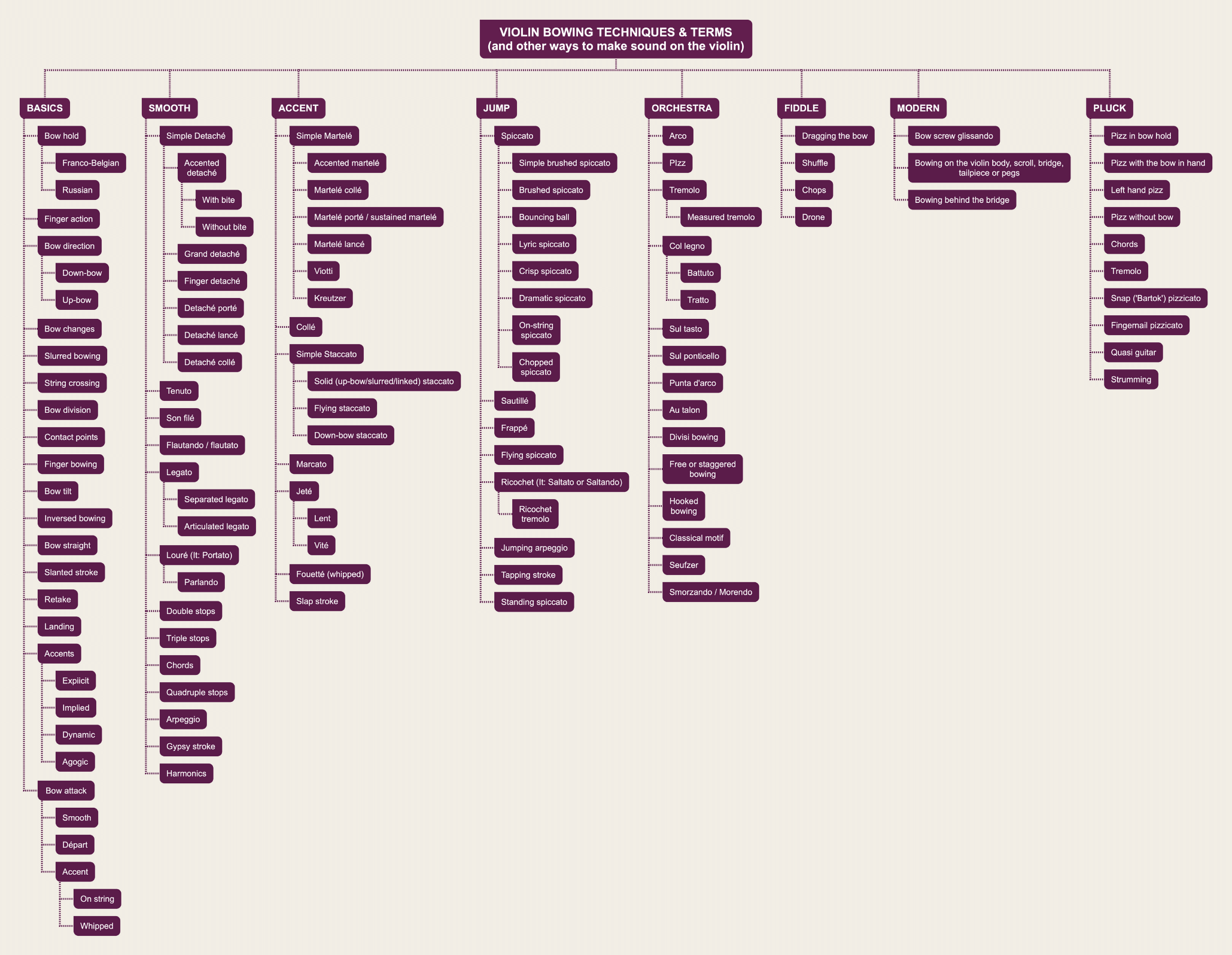
Basic Violin Bowing Terms
Before we dive into the techniques and famous repertoire, I’d like to mention a number of basic violin bowing terms you might encounter when playing the violin.
Bow hold is the way you hold your bow. Common bow holds are Franco-Belgian and Russian.
Finger action is the movements your bow hand fingers make while bowing.
Down-bow is a bow stroke moving from the frog (the heel) to the tip of the bow.
Up-bow is a bow stroke moving from the tip (point) to the frog of the bow.
Bow direction is the decision to play a certain note up-bow or down-bow.
Slurred bowing is playing multiple notes on one bow stroke, causing smooth transitions between the notes.
Bow change is the moment the bow moves from down-bow to up-bow or the other way around.
String crossing is moving from playing on one string to playing on another string.
Bow division is deciding where on the bow (for example lower or upper half) to play the notes.
Contact point is where between the bridge and the fingerboard the bow touches the string while playing.
Finger bowing is an exercise to bow just by moving your fingers and not your wrist or arm.
Bow tilt is that the bow stick is not straight above the hair, but slightly tilted in the direction of the violin scroll.
Inversed bowing is tilting the bow in the direction of the bridge.
Bow straight means that at all times during the bow stroke the bow is in a 90 degree angle towards the string.
Slanted bowing means that the tip of the bow points slightly in the direction of the scroll, so you’re not bowing exactly straight.
Retake your bow is to make a bow stroke, lift the bow, move it through the air and placing the bow in the same starting place to play another note.
Landing the bow is smoothly putting the bow back on the string, for example when retaking the bow.
Accents are made to stress one note in relation to other notes.
Explicit accents are indicated in the sheet music and should be clearly articulated.
Implicit accents are derived from the musical context and usually more subtle.
Dynamic accents are made by an increase in volume.
Agogic accents are made by delaying or lengthening the note.
Bow attack is the way you start a note.
Smooth attack is a vowel like beginning of a note.
Départ attack is a clearly defined and consonant like attack.
Accented attack means that the note starts with an accent.
On the string attack is that the beginning of the note starts with the bow on the string. This can be with or without accent.
Whipped attack is that the bow lands on the string from the air at the beginning of a note.
On this page I go deeper into these bowing terms including sheet music symbols and images.
Smooth Violin Bowing Techniques
In these type of bow strokes the notes are played in their full length: sustained. The bow change can be accented or smooth as explained on my page with 25 basic violin bowing terms right here. The bow does not jump or otherwise leave the string with an exception for detaché collé. All these bow techniques are active, meaning controlled by the bow hand.

Simple Detaché: Default Bow Stroke
A simple detaché is the default way of bowing. There are no special markings in the sheet music. You play one bow stroke for each note, play the notes in their full length and make seamless bow changes.

Accented Detaché
Through added weight and bow speed at the beginning of the bow stroke, we hear an accent. The notes are still played in their full length, connected and played one bow stroke per note. This bowing technique is a combination of simple detaché and martelé.

Accented Detaché with bite
This is a stronger version of the accented detaché. The note starts with a clear bite. The bite is made by an inflection with the index finger.

Grand Detaché
Large, long and fast bow strokes with a lot of energy and sound. The technique is similar to accented detaché, but it’s more solistic.

Finger Detaché
This technique is done purely with movements in the fingers and a flexible wrist. It gives a very efficient small detaché for extremely fast and light passages.

Detaché Porté
This is a detaché with a slight heavy swelling on the marked notes. There is no ‘click’ sound as in martelé or accented detaché.

Detaché Lancé
This is similar to detaché porté, but uses a martelé like bow speed instead of the heavy swelling produced by the right hand.

Detaché Collé
In this bow stroke you lift the bow at the bow changes, creating a sort of slow motion spiccato with full bow control. Depending on the performance you can find it in the Fuga of Bach’s 1st violin sonata. There’s no special notation of this in the sheet music.

Tenuto
Tenuto means that the notes are played in their full length, but are clearly separated. In sheet music you’ll see a dash above or below the note. Tenuto is opposed to staccato, in which you play the notes shorter. Both are more considered musical articulations than bow techniques.

Son Filé
Son filé is a bowing technique in which you make a deep and full tone, like in the opening of the Bruch violin concerto. There is no special marking. It needs to be derived from the general character of the piece you play.
A weird, but effective, practice tip: while you create a full sound, imagine the back of your violin resonating. Your tone will be deeper.

Flautando
Flautato or flautando is bowing with a high bow speed and little pressure so you get a whistling transparent sound.
As flautato is often played sul tasto, close to the fingerboard. Sometimes these terms get mixed up. Sul tasto just refers to the contact point, while flautato also refers to a particular sound, bow speed and weight.
Also don’t confuse flautato with harmonics, which also create a whistling sound, but are a left hand technique.
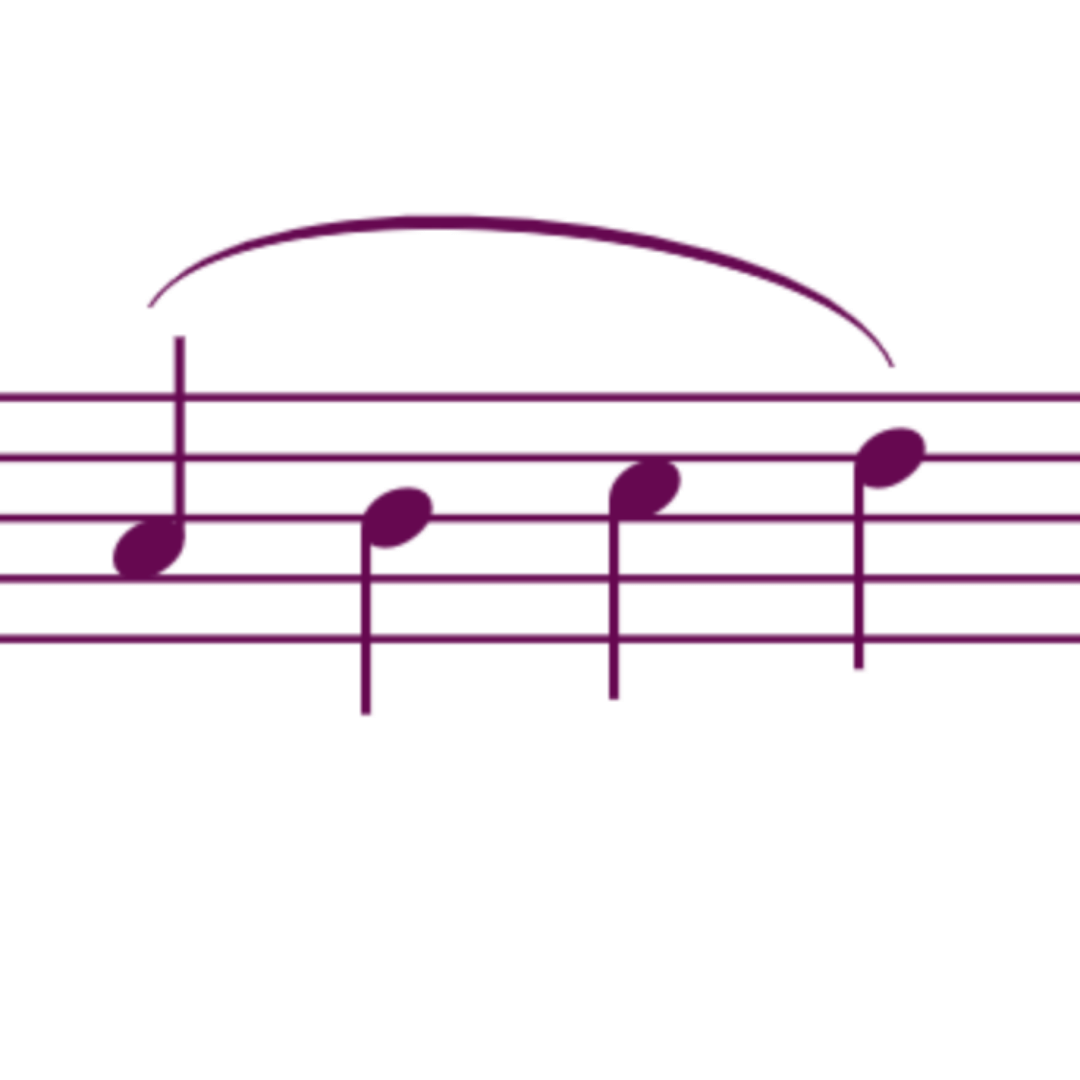
Legato bowing
As a bowing technique legato refers to playing multiple notes on one smooth bow stroke. You hear fluent transitions between the notes. In sheet music you see a slur above the notes.
As an articulation legato refers to smooth transitions between the notes and can also refer to notes that are not slurred, but are connected by seamless bow changes.
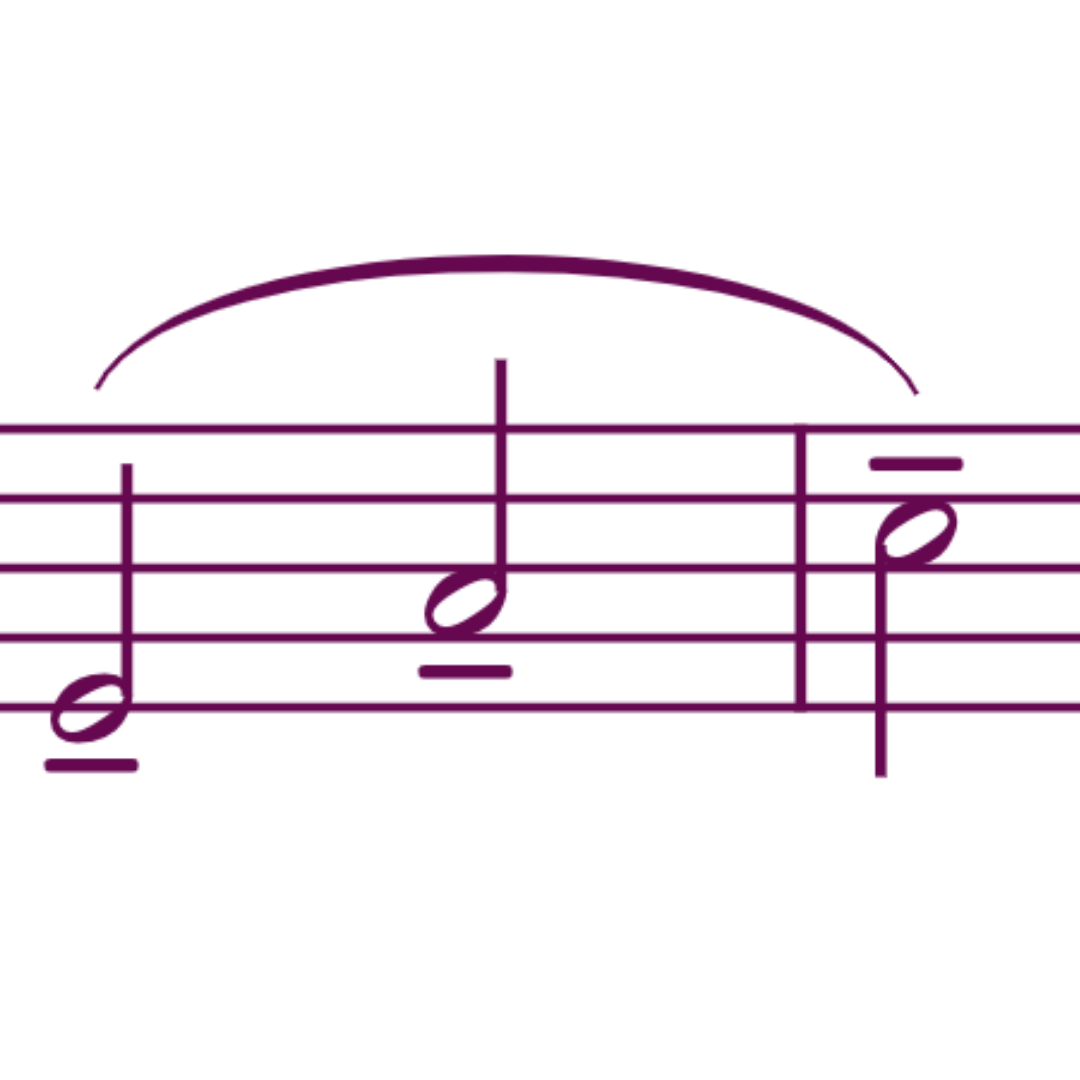
Separated Legato
By changing speed and pressure during a legato bow stroke, one can subtly separate the notes. This gives a flowing, yet rhythmical expression.
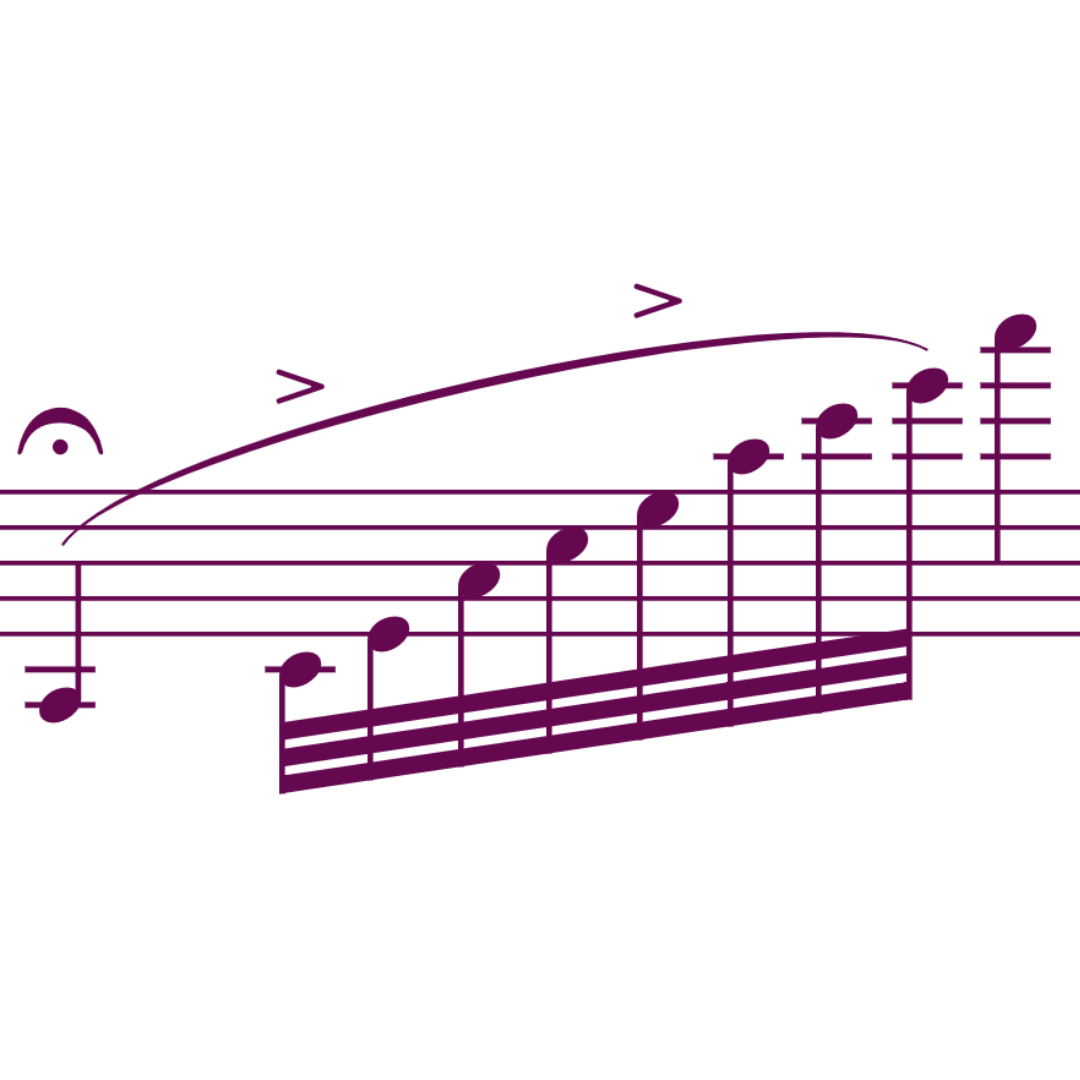
Articulated Legato
In long fast legato runs, which are not differentiated rhythmically by the composer, it’s helpful for the listener to subdivide the passage into shorter rhythmic units. In practice you stress them by the bow and in performance you stress them mentally. This improves the articulation of the run. The sheet music indication is just as an example, but this technique is not indicated in the sheet music.

Portato (Italian) or Louré (French)
Portato is similar to legato as you play multiple notes on one bow stroke, but you stop your bow between the notes without adding accents or weight. It sounds a bit similar to detaché and is usually applied to several same notes.

Parlando
Parlando means ‘as we speak’ and is an alternative for portato that can be used at the same marking in the same repertoire. Instead of stopping the bow, keep the bow flow and separate the notes with inflections made by your index finger. Watch this video to learn all about parlando and the differences with portato or louré bow strokes.
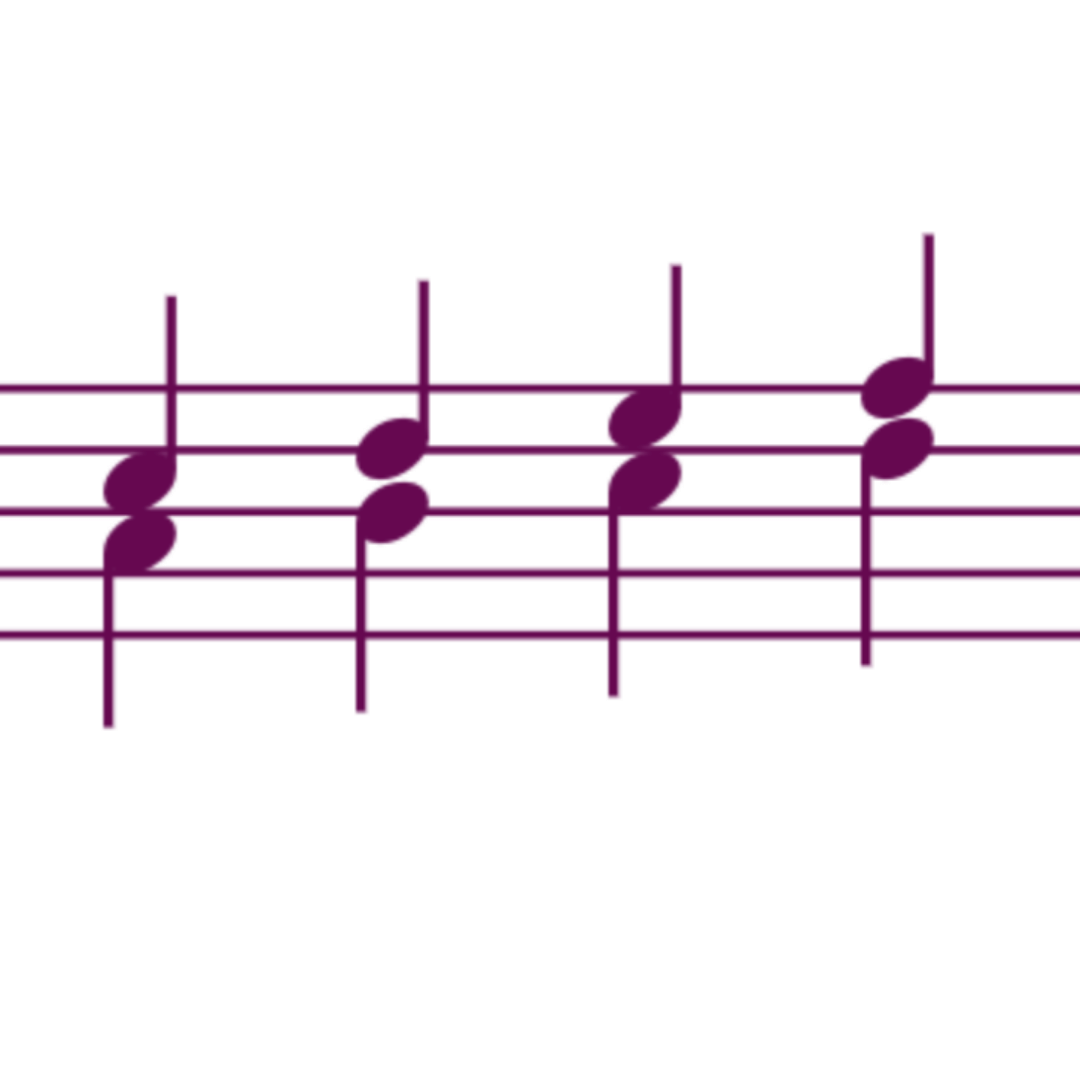
Double Stops
When you see two notes above each other in the sheet music, you play on two strings at the same time and sometimes put fingers on two strings at the same time.
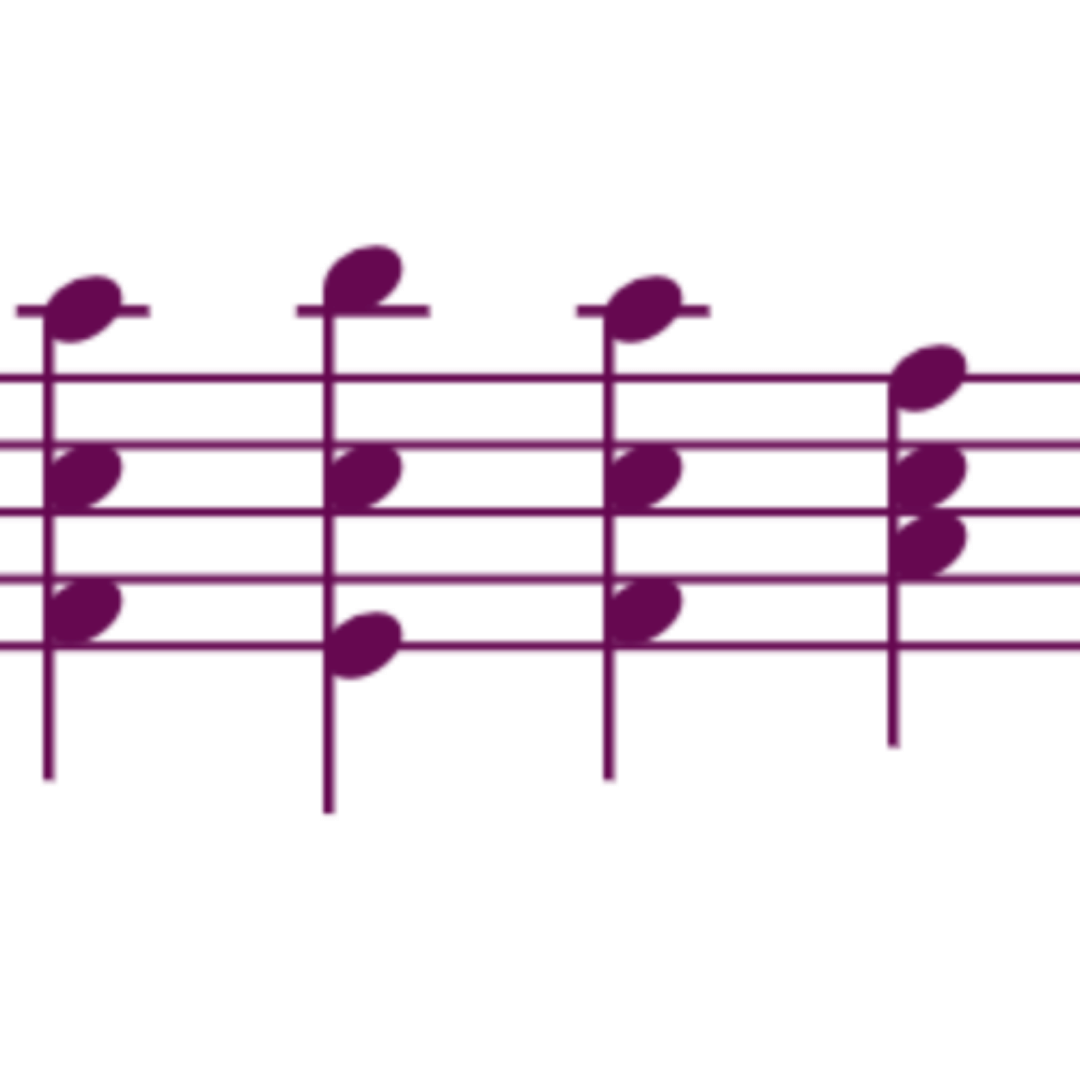
Triple Stops
When you see three notes above each other, it can mean chords or triple stops. In a triple stop you play on three strings at the same time. This is not as convenient as double stops. One has to play close to the fingerboard and press down the middle string to make them sound all three at the same time.
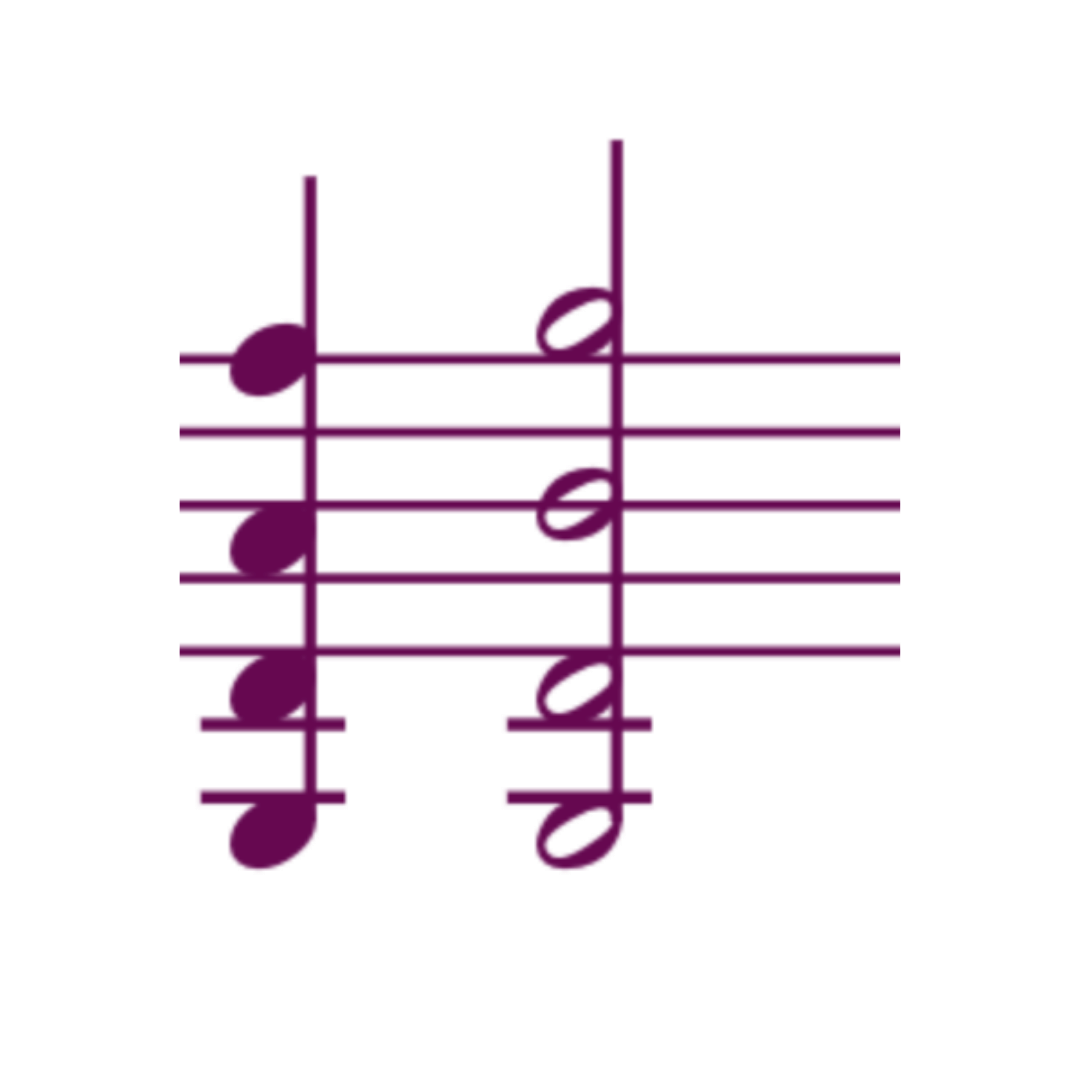
Chords
Three or four notes above each other are chords. As it’s inconvenient or impossible to play three or four notes at the same time, on the violin we ‘break the chord’. This means that we first play the lower two notes and then the upper two notes. Because of the resonance of the violin, four notes can sound at the same time without being bowed at the same time.

Quadruple Stops
Feel free to prove me wrong, but with a normal set up it’s impossible to bow four notes at the same time. One needs to either flatten the bridge or use a special bow like a ‘rundbogen’.
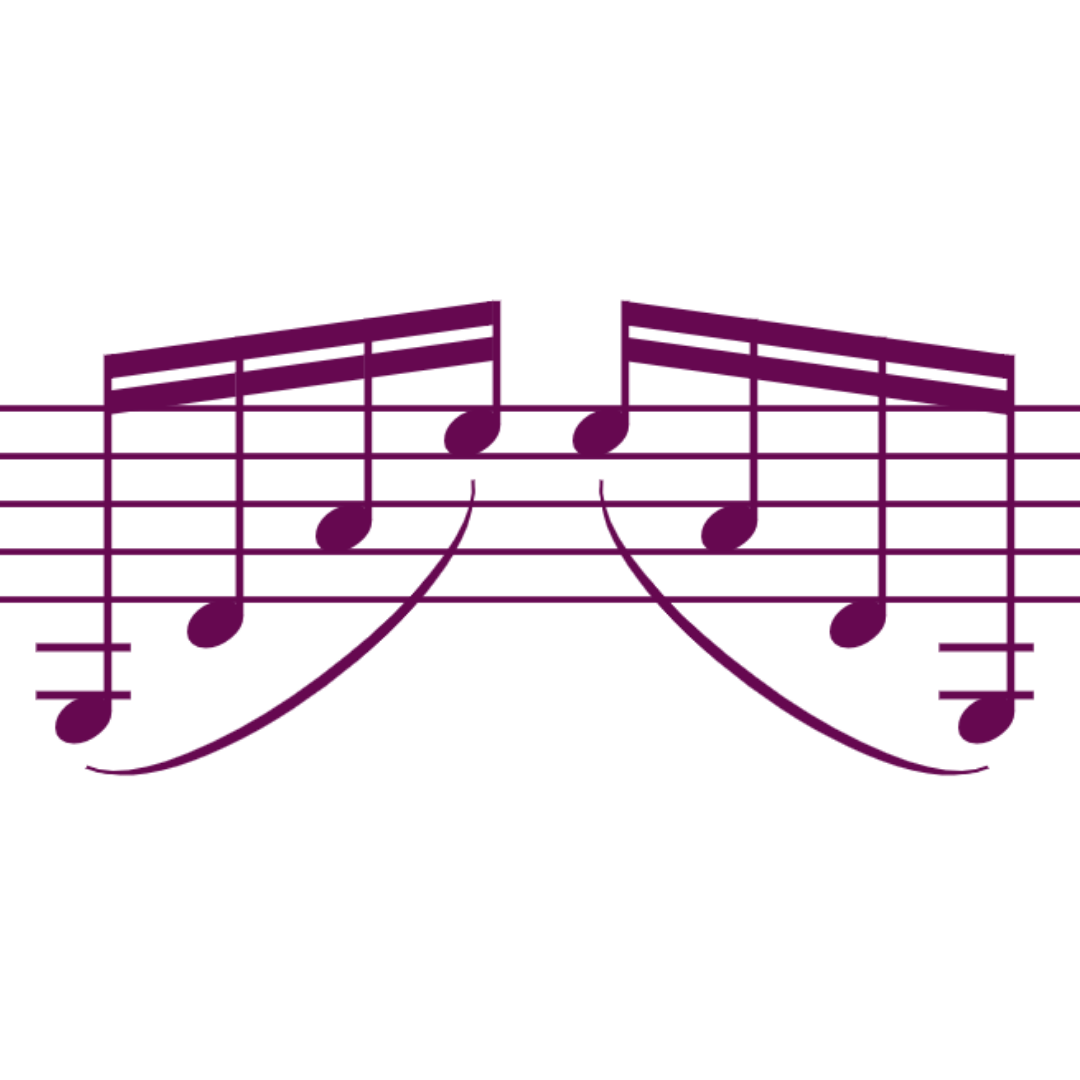
Arpeggio
An alternative way to play chords on the violin is to not play the notes one by one and slurred. In the sheet music the notes can look like fast notes on all four strings after each other or exactly like chords.
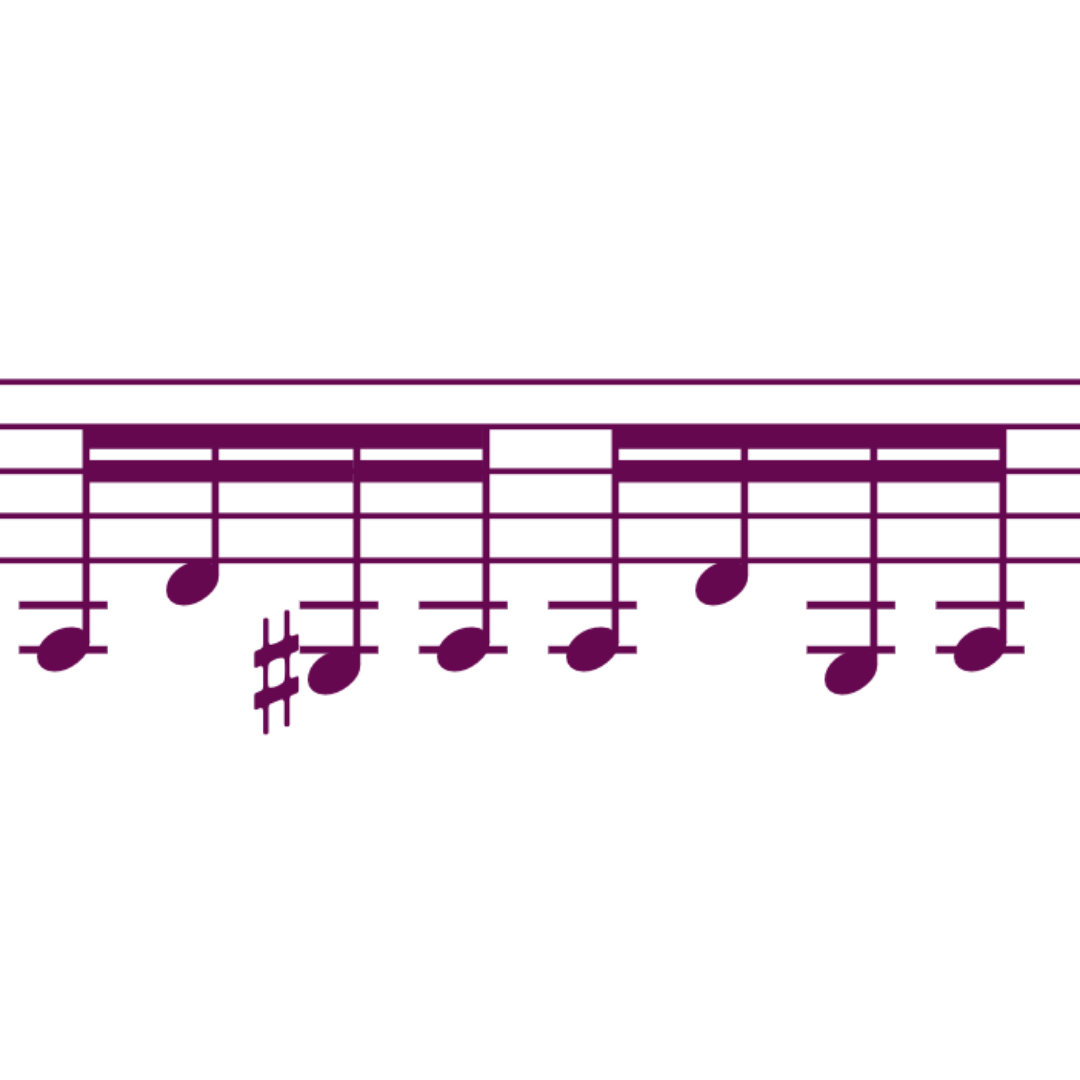
Gypsy bow stroke
This bow stroke is a mixture of detaché and martelé. It’s a way to play well articulated fast notes with a gypsy feel. The notes are clearly separated and played with a bite.
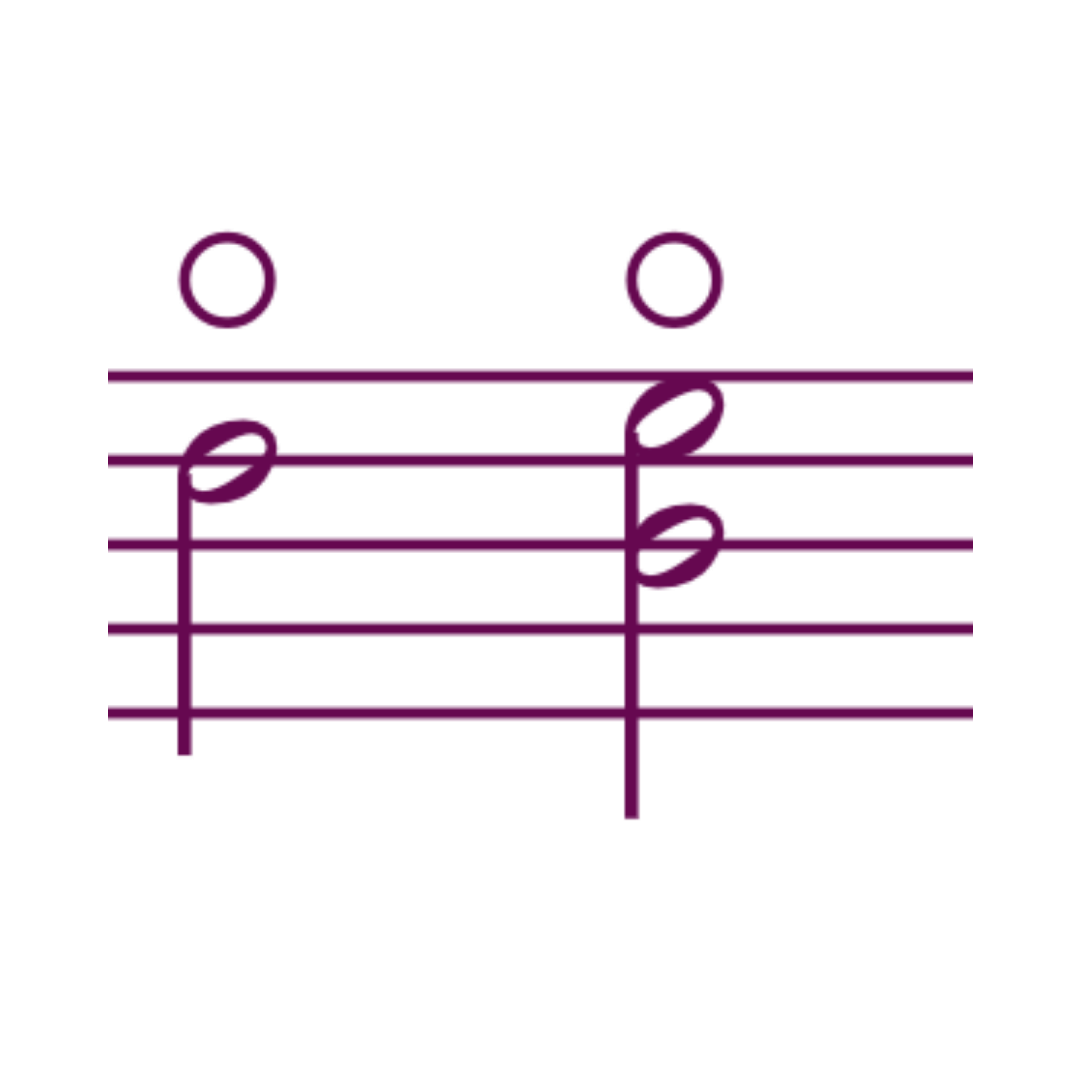
Harmonics
Harmonics (or flageolets) are sounding overtones when lightly putting a finger on the string without pressing it down creating a whistling sound. This is a left hand technique, but requires good bowing to make it speak.
The bow stroke in harmonics should be heavy, of sufficient length and with a sounding point near the bridge. To learn more about violin harmonics check out my easy guide right here and 6 bowing tips for harmonics right here.
Accented Violin Bowing Techniques
In accented bowing techniques the notes are not played in their full length. There is silence between the notes. In some bow strokes extra emphasis is added by an accent made with the arm weight, bow speed or a pinch with the index finger. All these techniques are on the string with exception of collé and flying staccato. These are all active bow techniques with exception of flying staccato, which is the only one that needs the natural jump and energy of the bow.

Simple Martelé bow stroke
Martelé is French for hammered, which indicates the character of this bow stroke. The simple martelé is a bow stroke that starts fast creating a bow speed or weight accent. The bow stroke ends silent as one lets the bow travel after the initial impulse. This bow stroke is without the bite that martelé might be known for to you.

Accented Martelé
In the accented martelé we catch the string by putting pressure on the bow with the index finger. In the beginning of the bow stroke we release this and let the bow travel. This creates a bow stroke that starts with a ‘click’ or a ‘bite’ and ends almost silent. This is the standard most well known type of martelé.

Collé
Collé is a technique where the fingers and wrist make a circular motion resulting in an active off-the-string bow stroke with a firm sound.
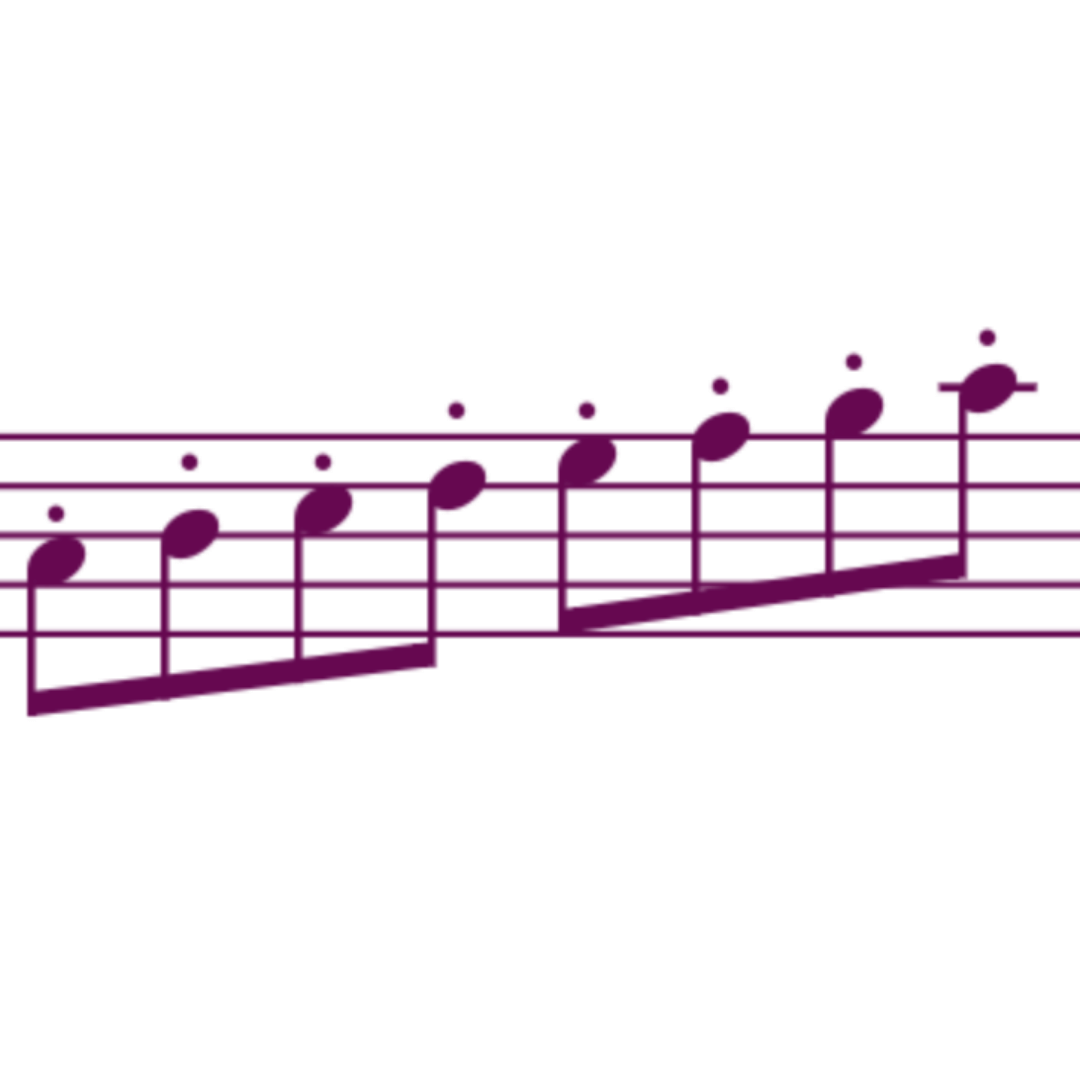
Martelé Collé
This is an off-the-string martelé: lift the bow off the string at the bow changes making a U shape with the bow. One can see it as a slow motion spiccato, but this is an active bow technique usually close to the frog. It can be done with or without accent on the string.

Martelé Porté or Sustained Martelé
After the martelé ‘click’ one usually just lets the bow travel without weight. In Martelé porté one sustains the note, but doesn’t play it in full length. You can also see this as a ‘normal’ bow stroke with a martelé start.

Martelé Lancé
This is a somewhat longer martelé note or a somewhat shorter detaché note. The bow speed is faster at the beginning of the note to create clearly separated notes, but there’s not a firm accent.
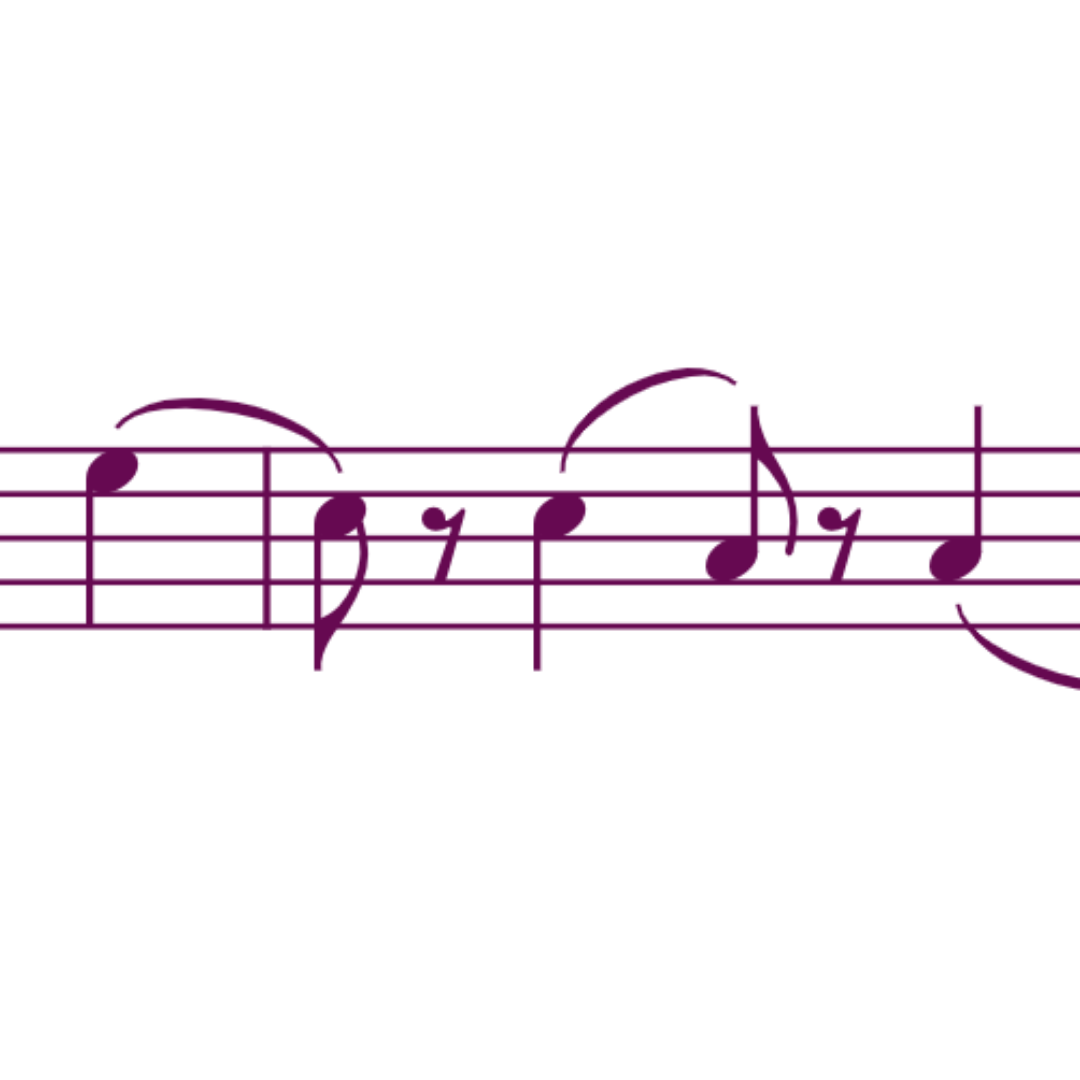
Viotti bow stroke
Mostly it refers to a martelé applied in a musical context of a whole-bow stroke starting in a weak beat followed by a shorter note and after that a rest.
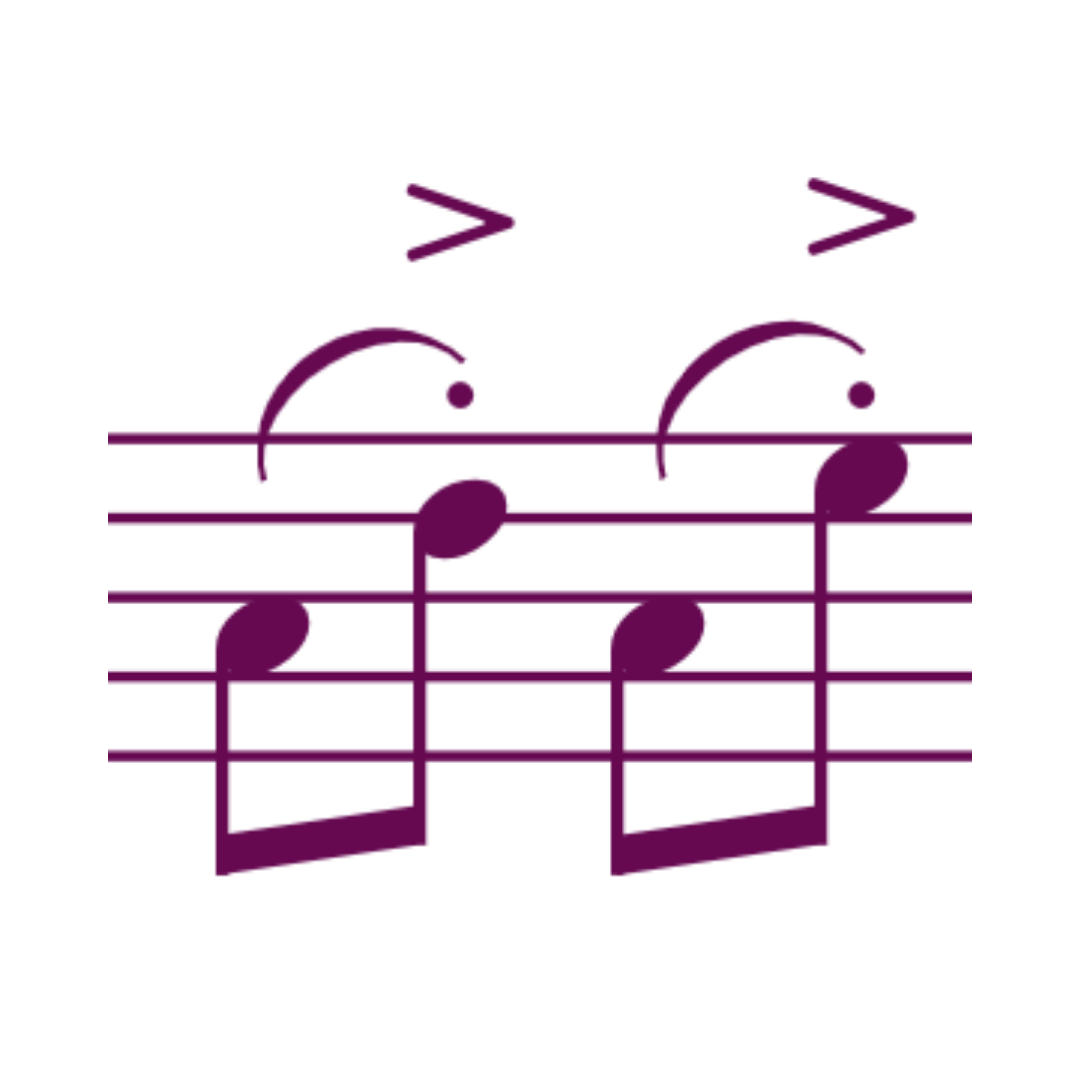
Kreutzer bow stroke
The Kreutzer stroke refers to two notes on one bow stroke of which the second note has a martelé accent.
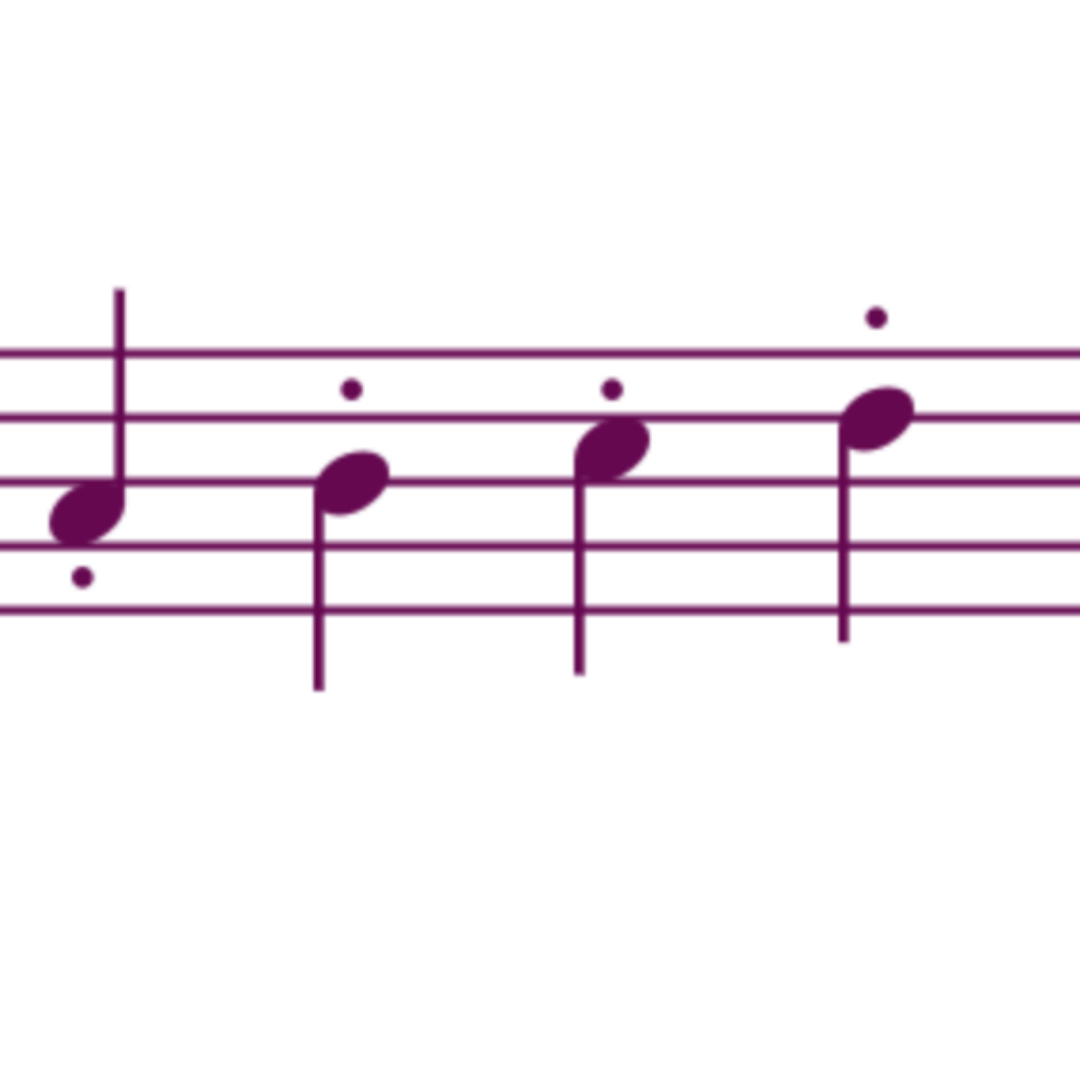
Simple Staccato bow stroke
Clearly separated notes not played in their full length. Sometimes accented notes with one note on one bow stroke. We see the simple staccato in slow as well as fast tempi.
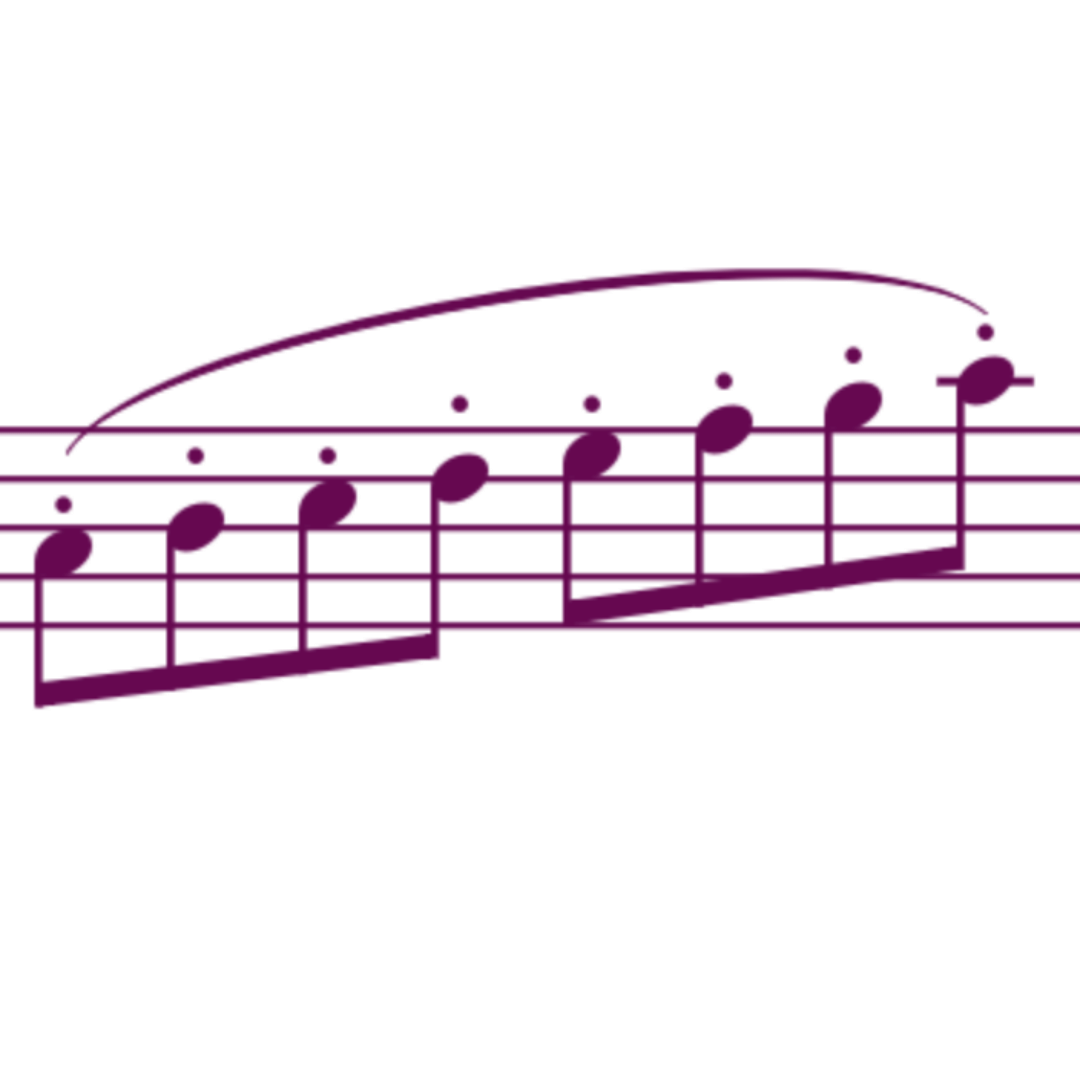
Solid Staccato
Also named up-bow, slurred or linked staccato
Multiple staccato notes on one bow stroke. The bow is stopped shortly for each note. The bow doesn’t leave the string. The index finger makes inflections to articulate. Usually it’s on an up-bow and in a fast tempo. It is accomplished with much pressure and tension in the right hand and with the hair in a flat position to get the maximum contact on the string.

Flying Staccato
This can be seen as multiple spiccato notes on one bow stroke where the bow travels. It’s a solid staccato, but with jumps between the notes.

Down-bow staccato
Doing several staccato notes on one bow-stroke requires a slightly different technique. The bow technique is more passive and looks a bit like ricochet. You release the bow as much as possible with your hand.
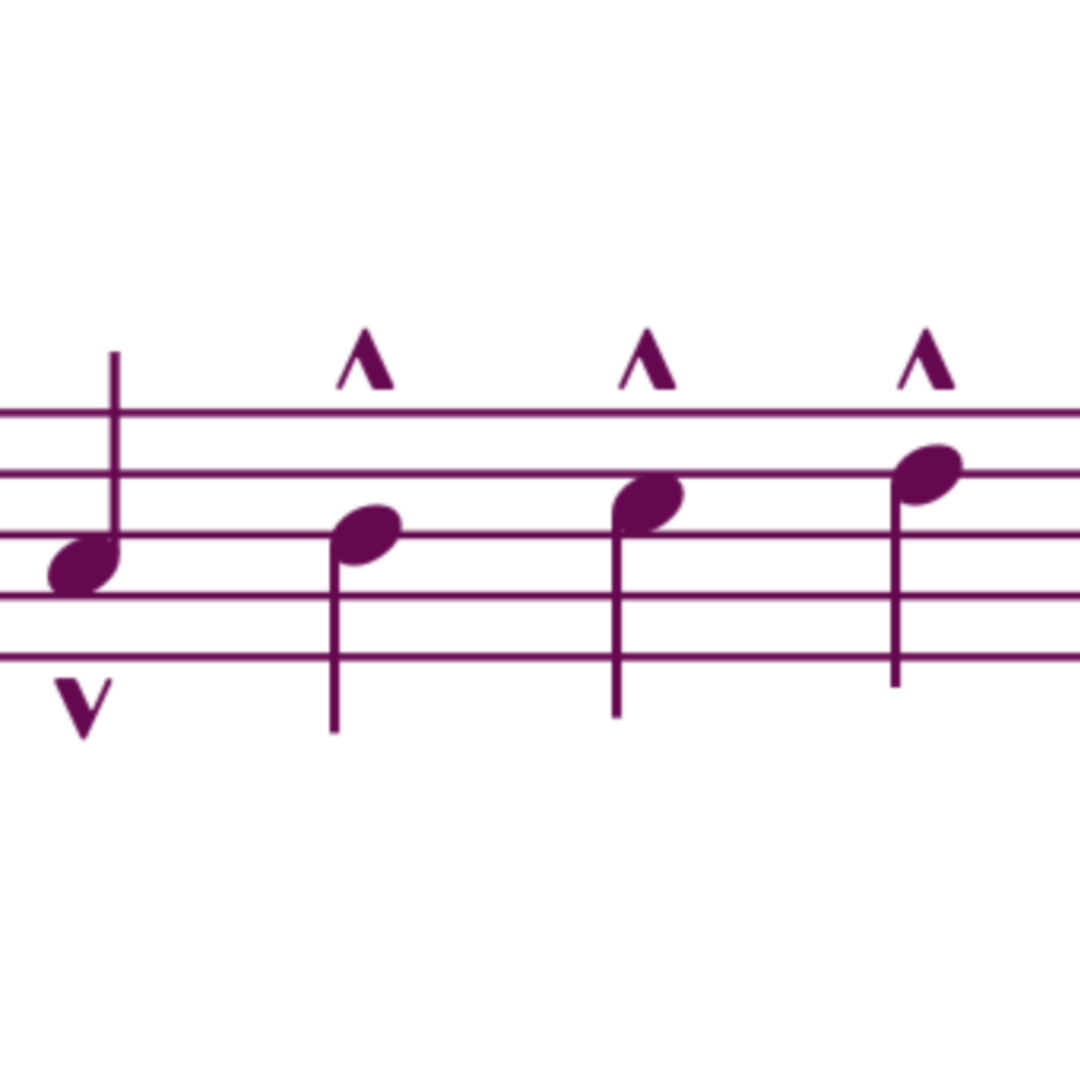
Marcato
Marcato means ‘marked’. The way to mark bow strokes is to clearly separate them, start the note with an accent or attack and play a descrescendo on each bow stroke. Usually marcato has not such a distinguished accent like staccato or martelé.

Jeté lent
A quick up-bow movement done at the frog. It starts on the string and ends in the air. It’s not a bounce of the bow, but a controlled movement of the bow arm.

Jeté vite
This is the same as jeté lent, with the only difference that it starts from the air. Usually this is done in sequences of two or more notes.

Fouetté
Whipped bow stroke
Accent the bow stroke by lifting the bow and ‘whipping’ it quickly back onto the string. It’s the middle between a spiccato on the string and accented detaché.
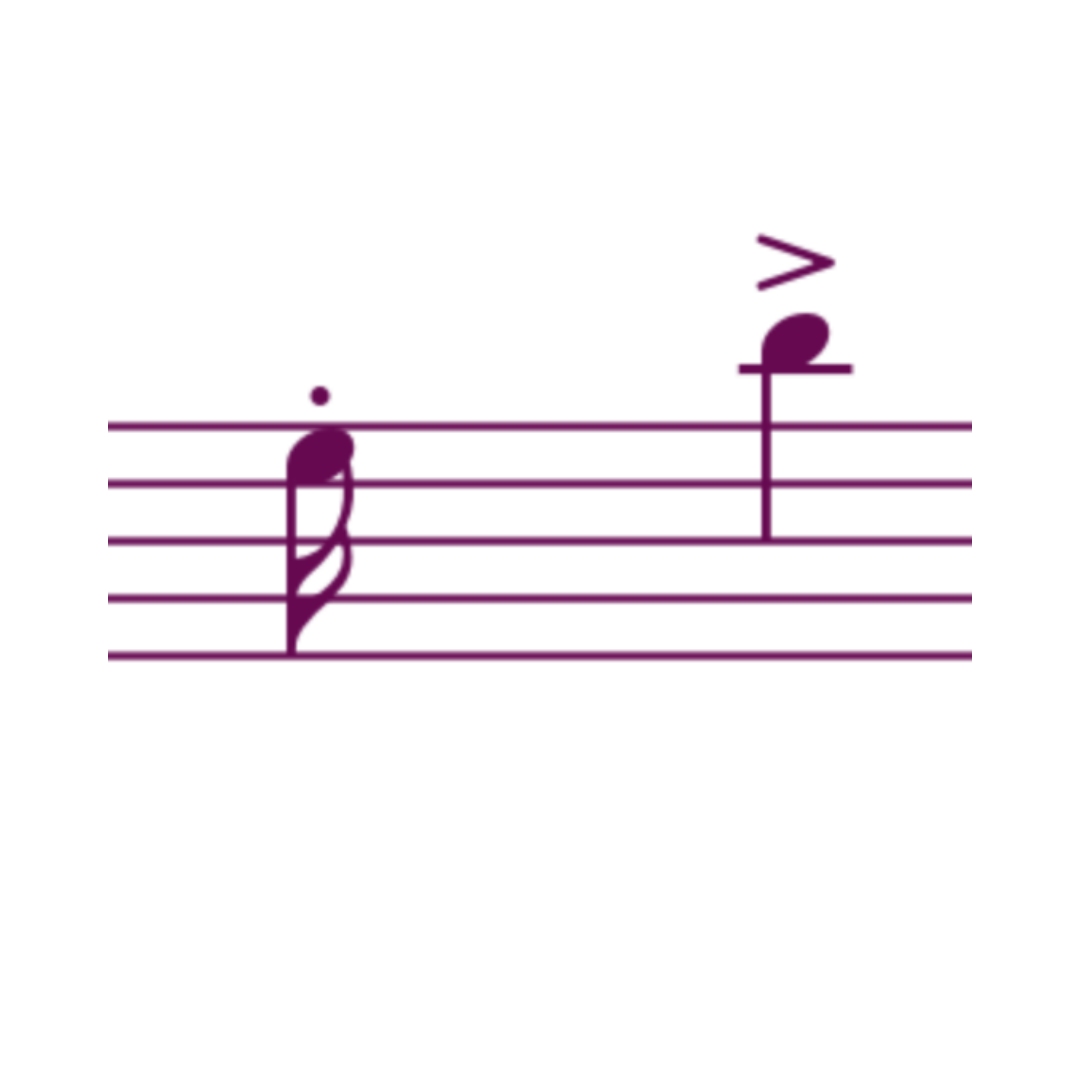
Slap stroke
This is a down-bow or up-bow usually at the frog starting with a quick vertical slap. The note after it is sustained, detaché. The note is played in it’s full length.
Jumping Violin Bowing Techniques
In jumping bow techniques the bow leaves the string. These can be active, semi-passive or passive bow stroke. In semi-passive or passive bowing techniques we use the natural jumping quality and energy of the bow. The bow hand is more reactive. The notes are not played in their full length as the bow is in the air at the bow change.

Spiccato bowing technique
Spiccato is a semi-passive bow technique, in which you work with the energy of the violin bow. The finger action gives an impulse and the bow bounces on it’s own. The bow is off the string at the bow changes.
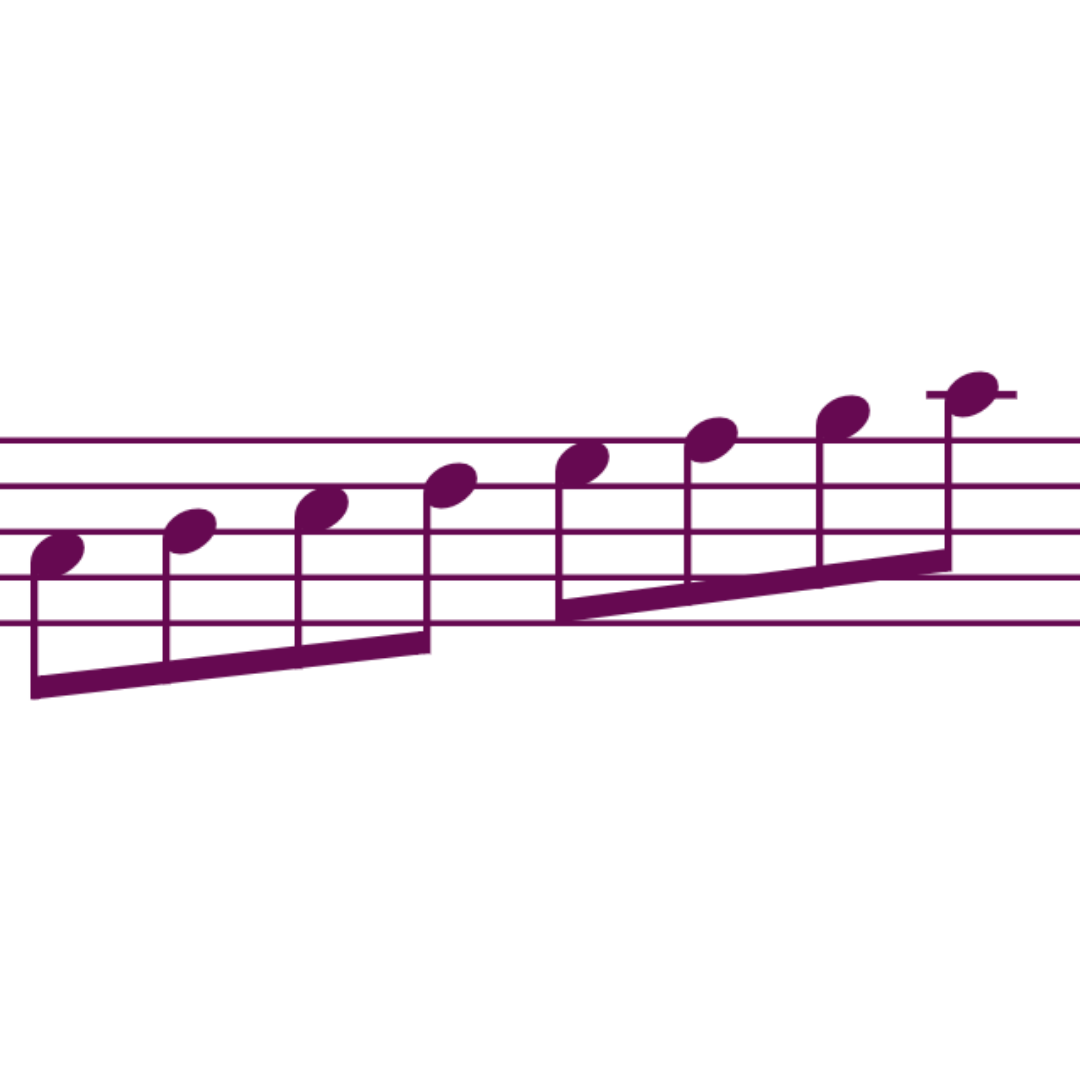
Simple brushed spiccato
Large, heavy and slow bow strokes near the frog with a firm hand. This is an active bowing technique.

Brushed spiccato
Brushed spiccato is a light on-the-string spiccato. It’s close to detaché, but the bow has some bounce and this gives lightness to the sound.

Bouncing ball bow stroke
A forceful and aggressive spiccato made by the fingers making a vertical motion that is a bit like bouncing a ball.

Lyric spiccato
This is an elegant spiccato, mostly done with the side of the hair. The notes are played almost in their whole length and the bounce is minimal.

Crisp spiccato
Clearly articulated spiccato with a subtle bite.

Dramatic spiccato
A large spiccato movement with a full sound, low tempo and relatively high bounce. The bow stroke is almost fully actively controlled by the hand.

On-the-string spiccato (spiccato sulla corda)
This is a fast and firm spiccato. The bow doesn’t leave the string, but bounces within the spring system of the bow and the hair.
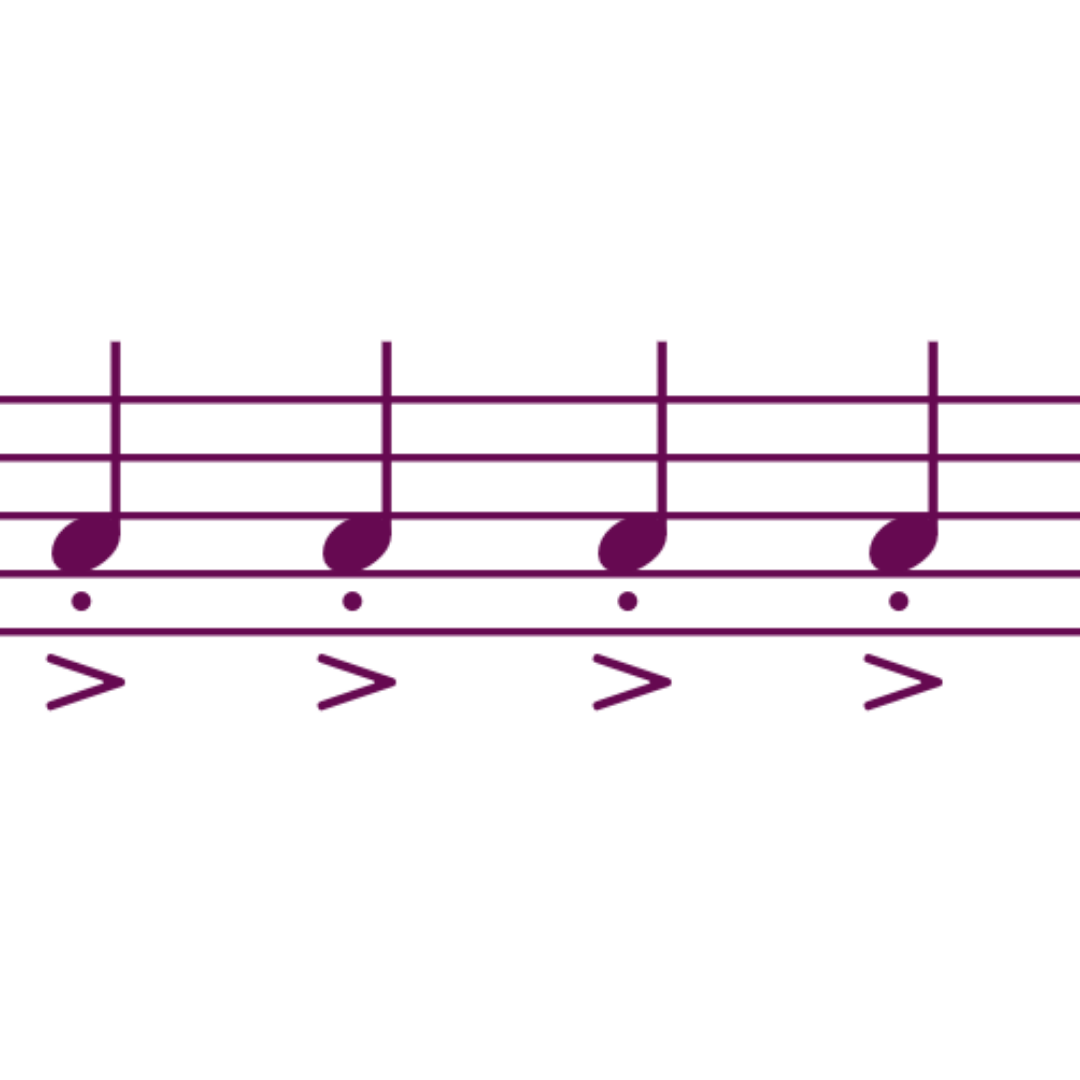
Chopped spiccato
Similar to spiccato, but heavier and slower. This is done when a spiccato sound is asked for, but the dynamic is too loud or the tempo is too low for a real spiccato.

Sautillé bowing technique
Sautillé is similar to spiccato, but this is higher up the bow and at a higher speed. It’s a passive bow technique: the bow bounces on it’s own and the hand doesn’t control the full movement. The fingers just give impulses.

Frappé bowing technique
This is used in a context where a sautillé is indicated in the sheet music, but for the sake of articulation one plays a firm on the string detaché with very short bow strokes. The result is that it sounds like sautillé, but it’s louder, more clearly articulated and you have more control over the bow. This is a great hack for fast passages.
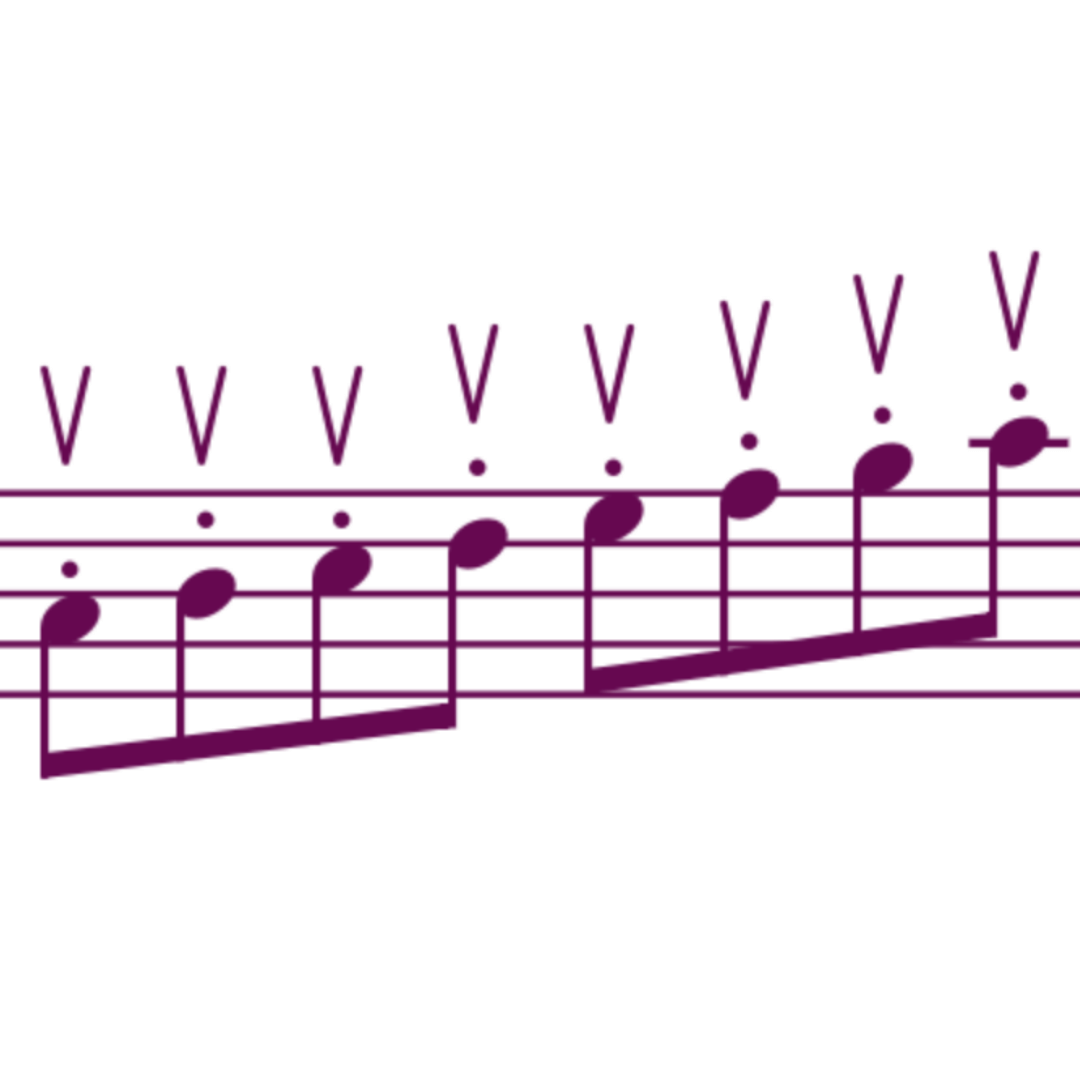
Flying Spiccato
Multiple spiccato notes in the same bow direction on the same spot of the bow. The hand and wrist make a circular motion. It can also be seen as a flying staccato, but the bow stays in one place. After one note the bow as to go back to it’s starting place.
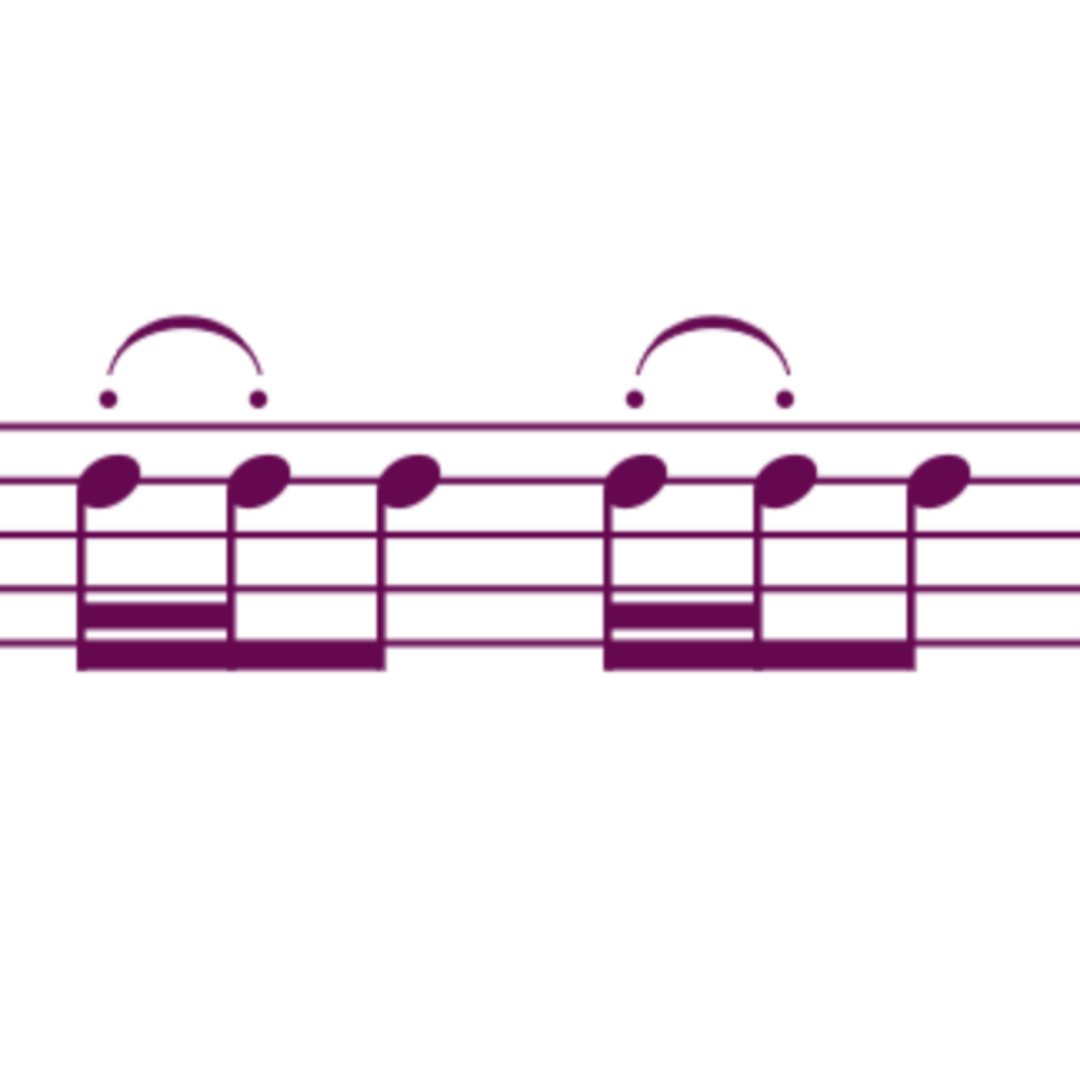
Ricochet bowing technique
Italian: Saltato or saltando
After one impulse, the bow can bounce from two to perhaps twenty times. This is a passive bow stroke usually performed on a down-bow. The pressure of the index finger and height of the bounce can determine the tempo.
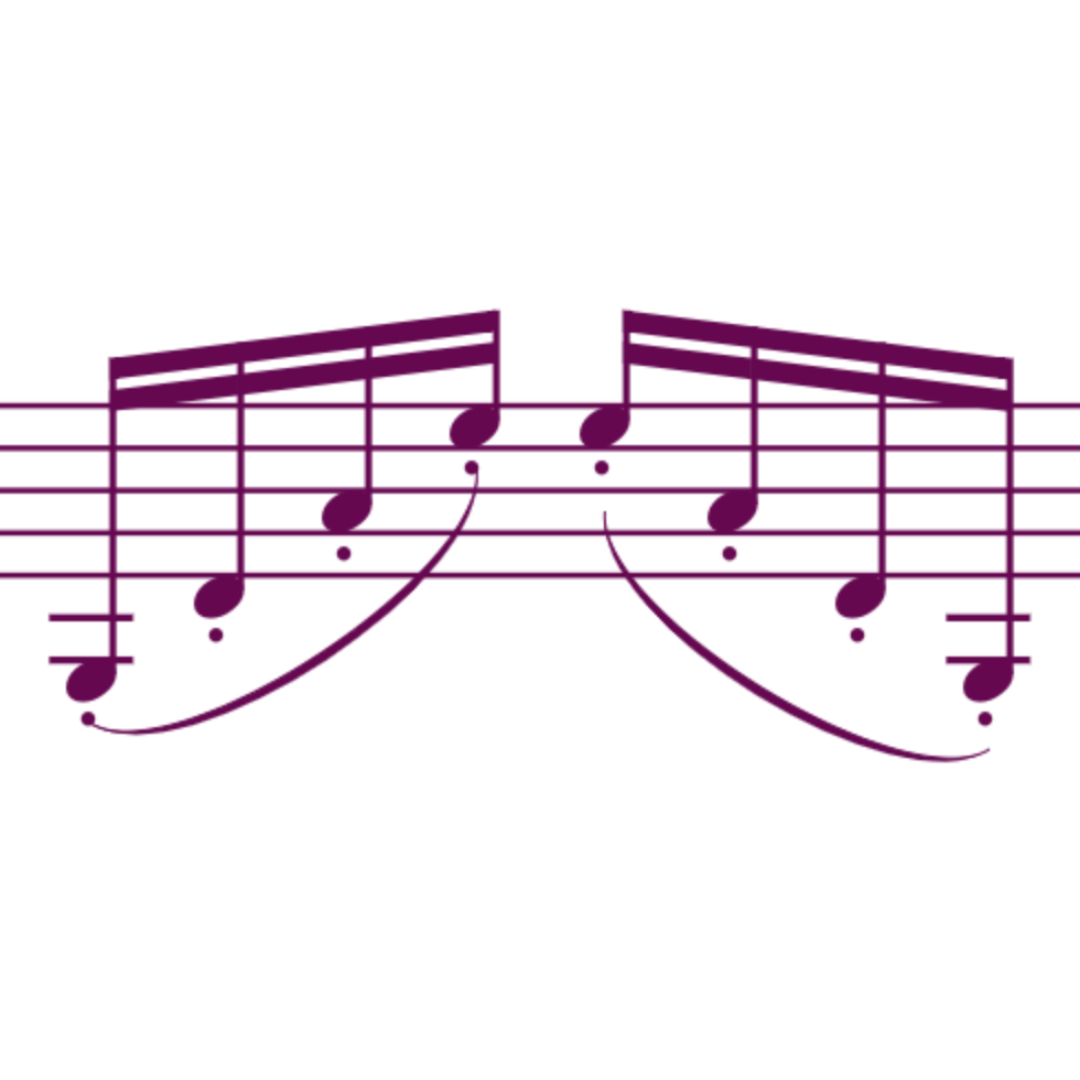
Jumping Arpeggio
This is ricochet over three or four strings on the down-bow as well as the up-bow. The higher the tempo, the more the bow bounces on it’s own. The lower the tempo, the more the hand actively controls the movement.
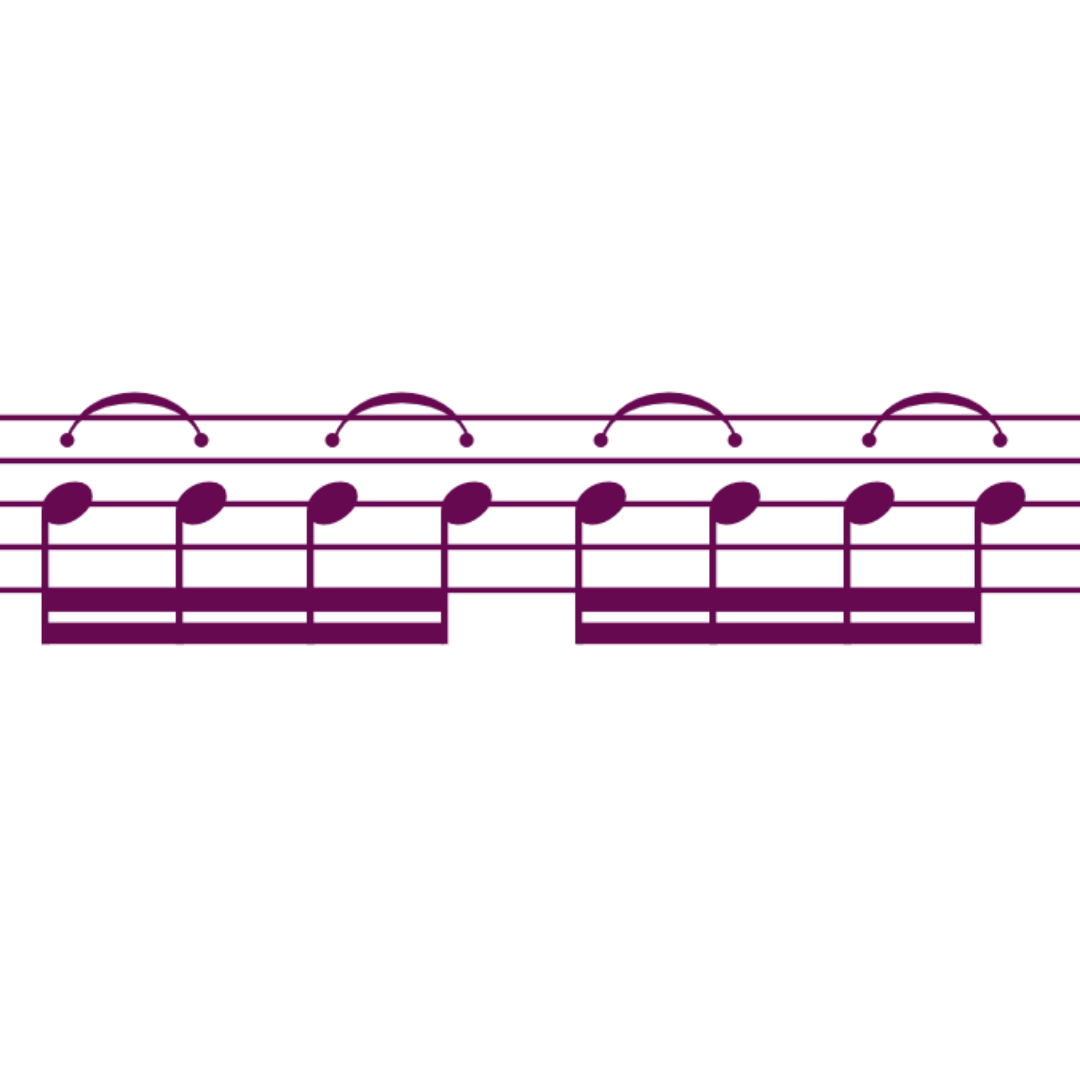
Ricochet tremolo
Two down-bow bounces followed by two up-bow bounces. It’s to replace the single spiccato notes in high tempo and long duration.
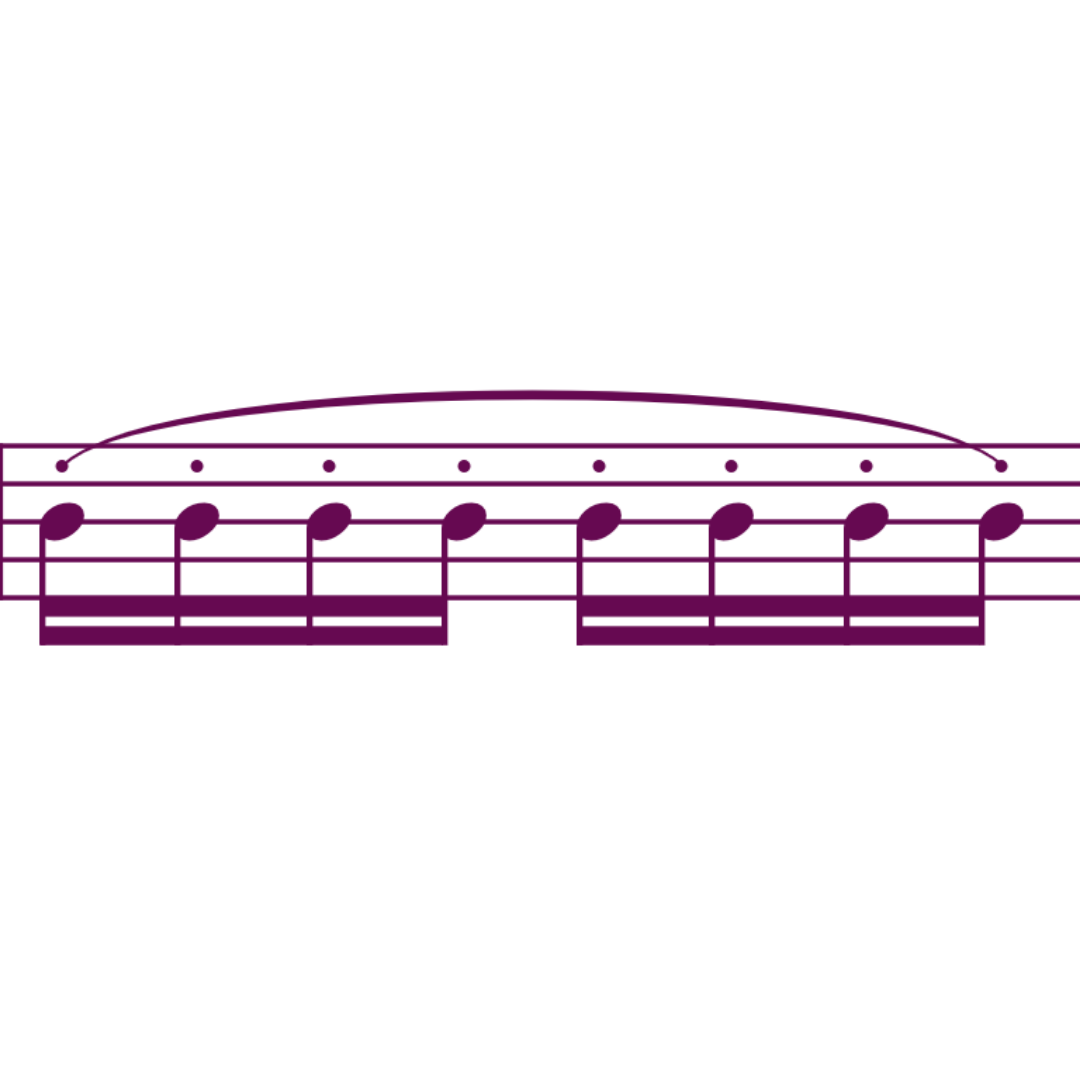
Tapping bow stroke
This is a light tapping motion to play several notes on one bow stroke. It’s softer and more subtle than flying staccato.

Standing spiccato
This is similar to the tapping bow stroke and the sound is also similar. In the standing spiccato the notes are played on the same spot of the bow. Circular motions with the wrist and finger ensure that the bow ‘stands’ on the same place.
Orchestral Violin Bowing Techniques
Playing the violin in an orchestra you’ll encounter specific bowing techniques, terms and symbols that are typical for symphonic works. Of course the bow techniques mentioned above are also done in orchestras.
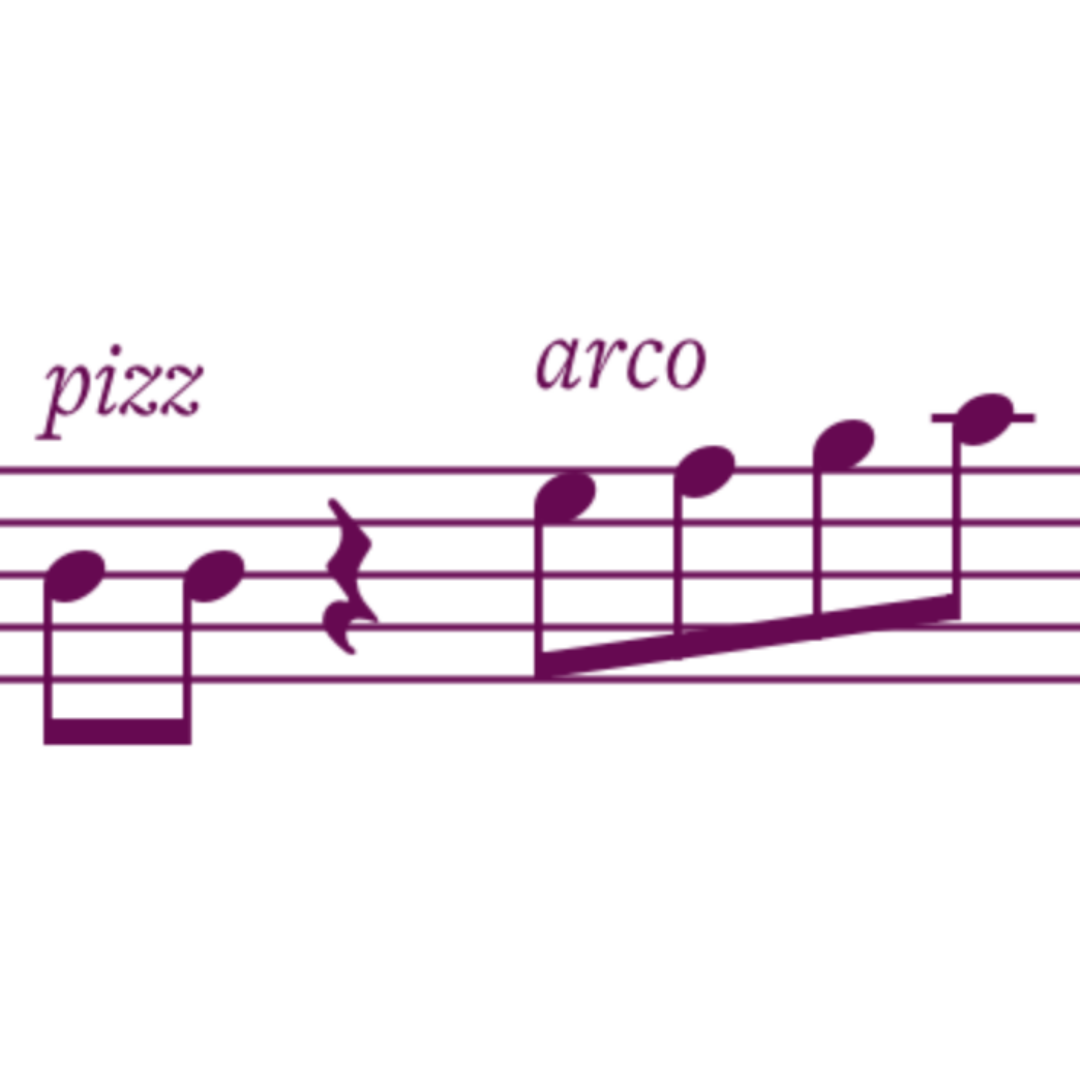
Arco vs Pizz
Pizz is short for pizzicato, which means plucking the strings. Arco means to start bowing again. In some orchestral works there are quick switches between pizz and arco.
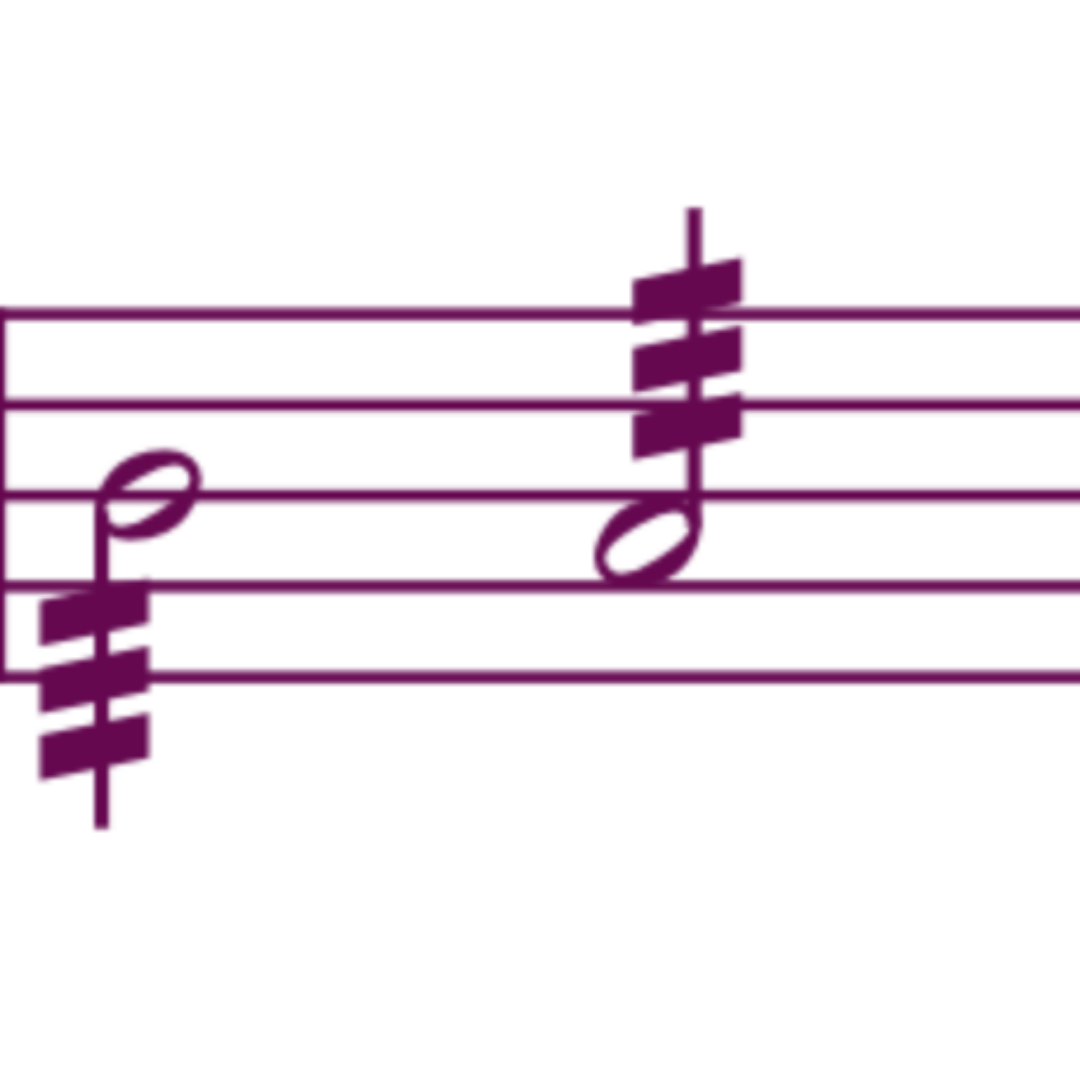
Tremolo
Tremolo are very short fast bow strokes at the tip of the bow. Usually they are played on one long note.
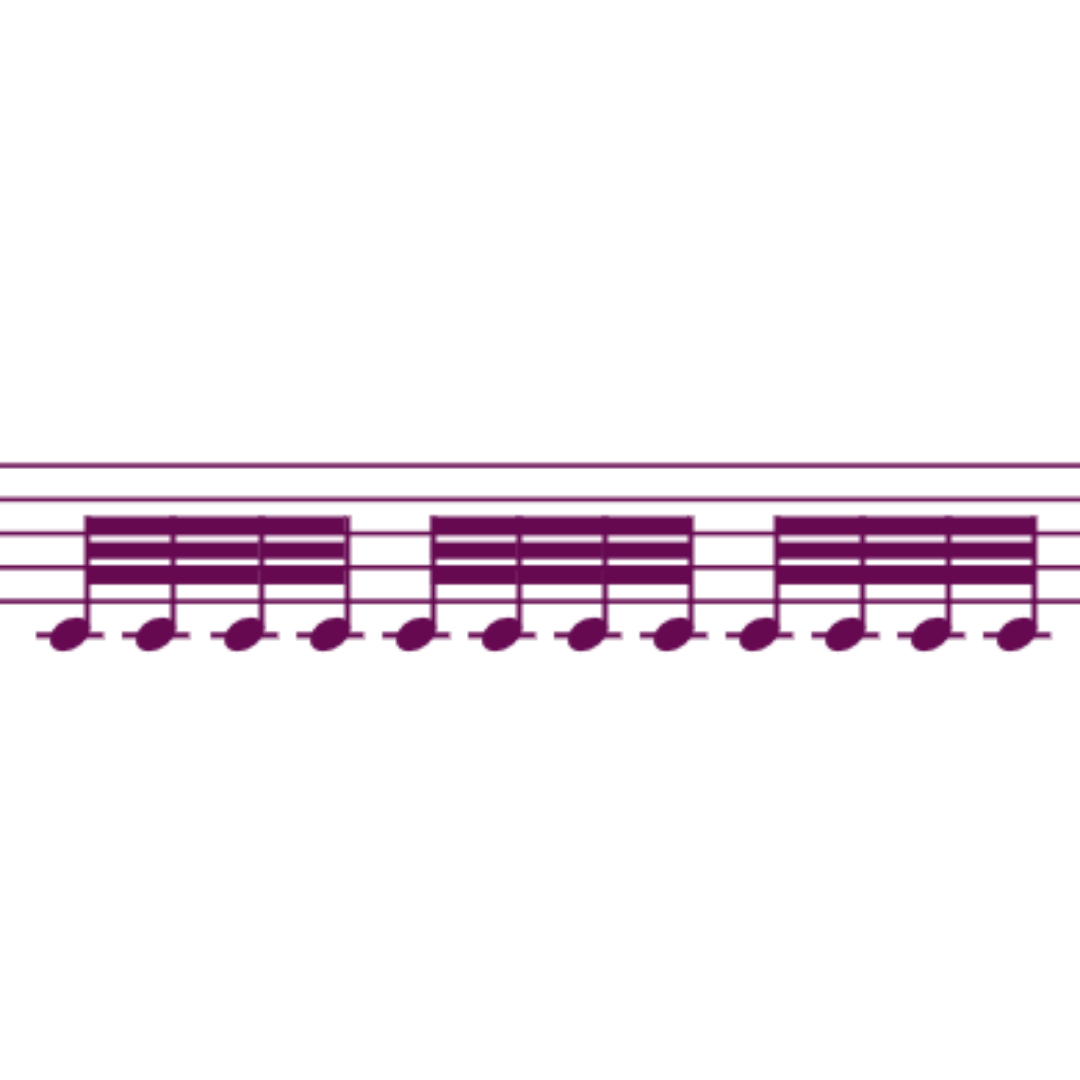
Measured Tremolo
The same technique as the standard tremolo, but it needs to be played in a precise rhythm.
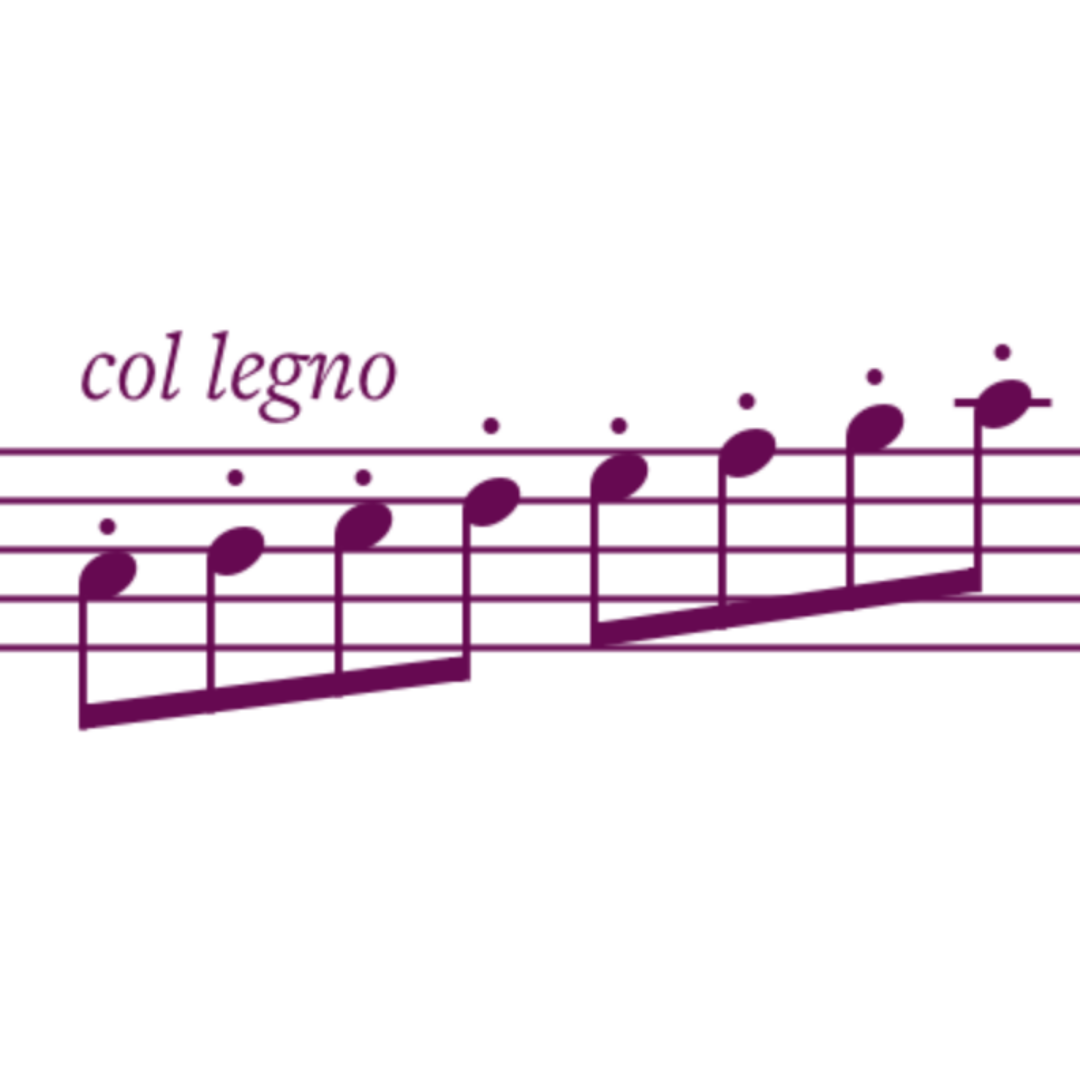
Col legno batutto
Col legno means ‘with the wood’. You bounce the stick (not the hair) of the bow on the string. This is the default way of doing ‘col legno’.
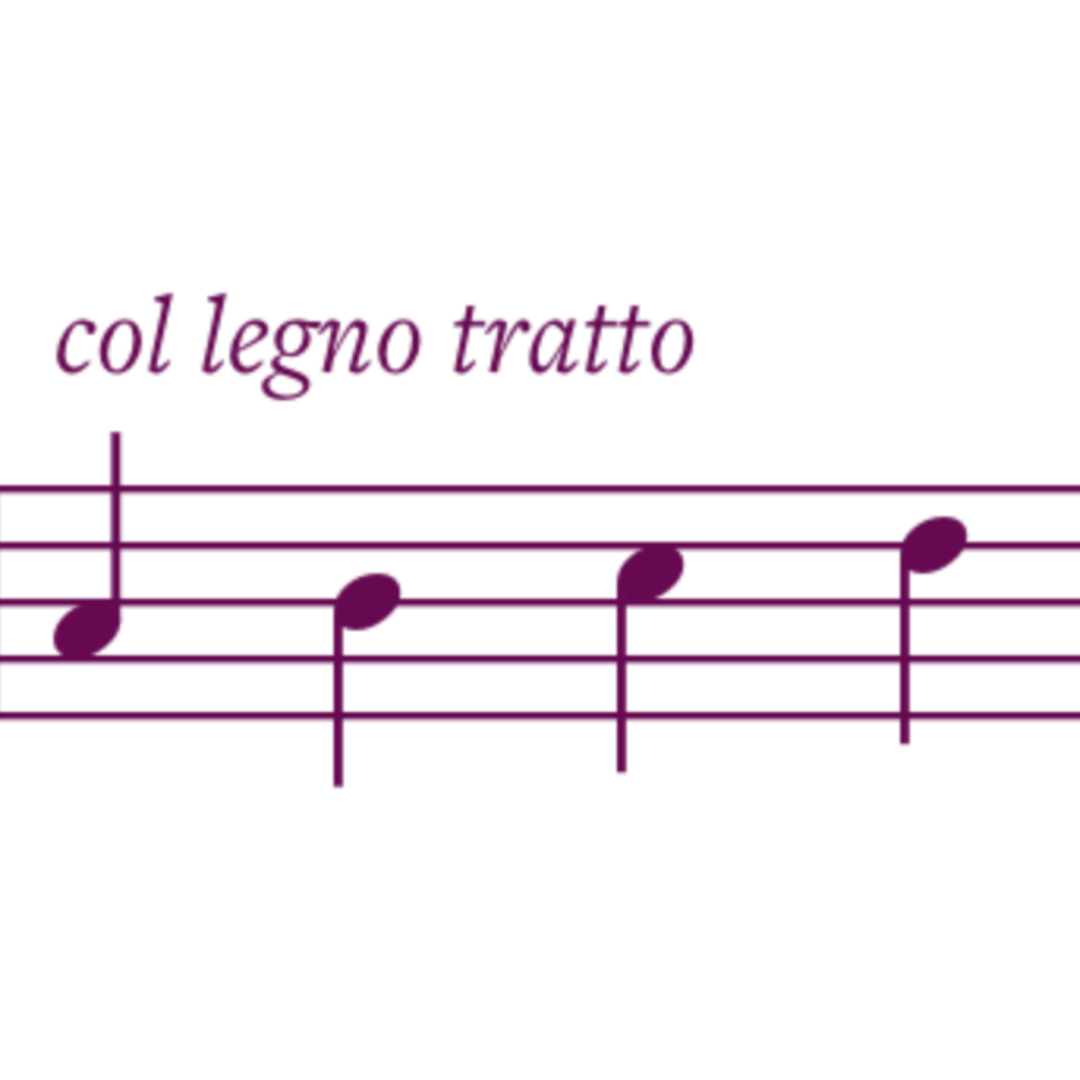
Col legno tratto
Tratto means dragged. You play with the stick of the bow instead of the hair and make actual bow strokes. Don’t do this often and be very careful.
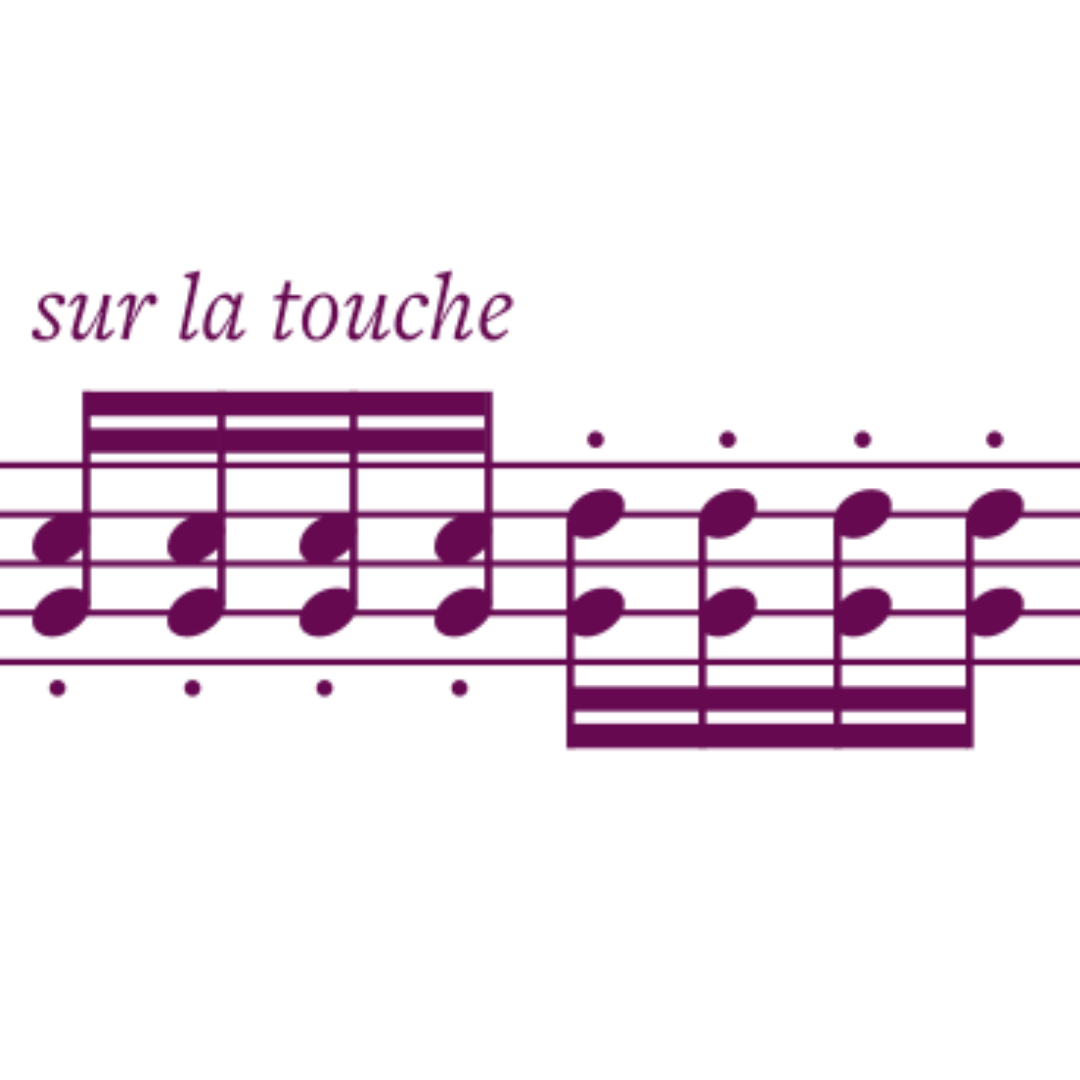
Sul tasto
French: sur la touche
Play with the contact point near the fingerboard. This creates a soft muffled tone. With a high bow speed, one gets a flute-like tone.
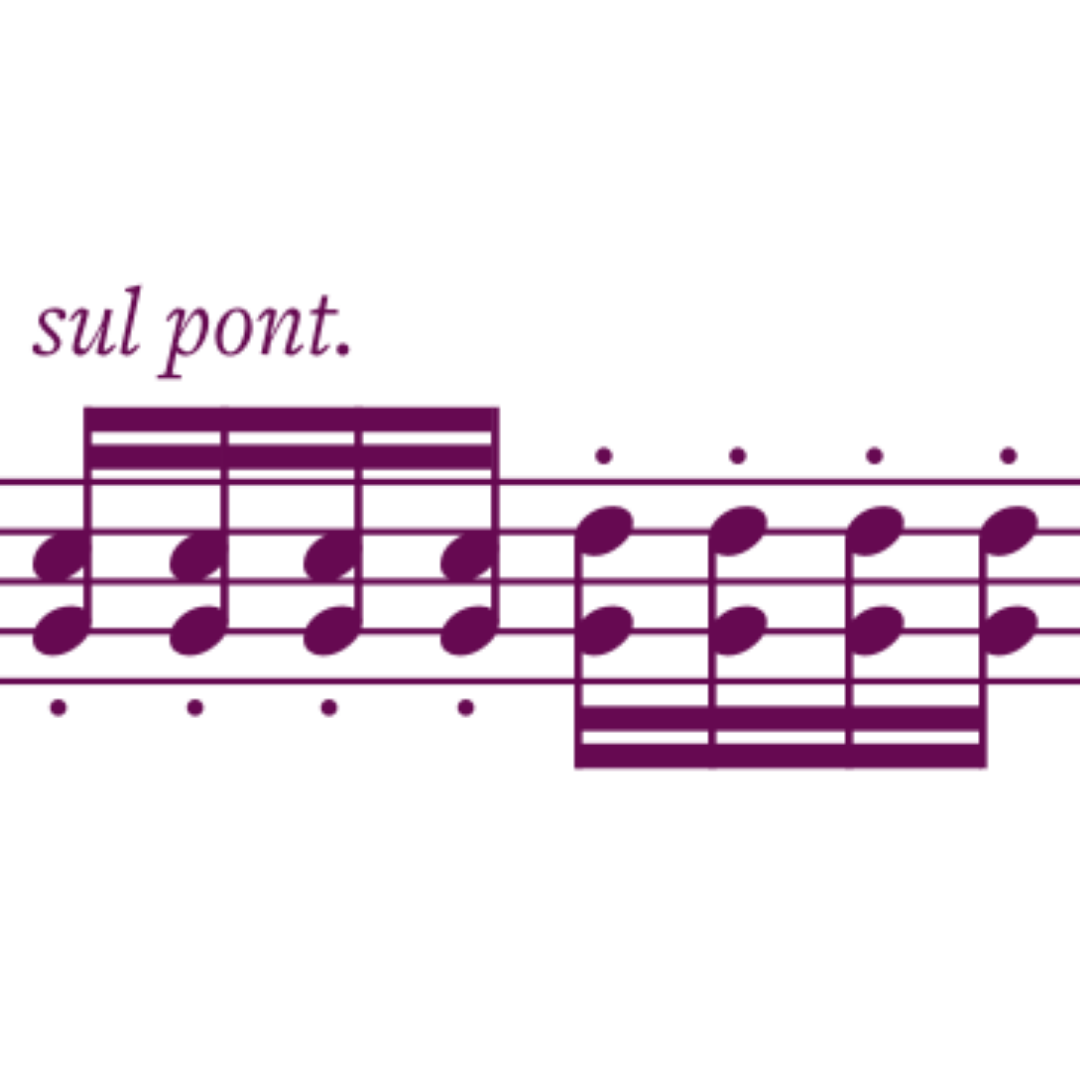
Sul ponticello
Play with the bow on the bridge or near the bridge. One hears the overtones and not the main tone. This creates a whistling, glassy and spooky sound.
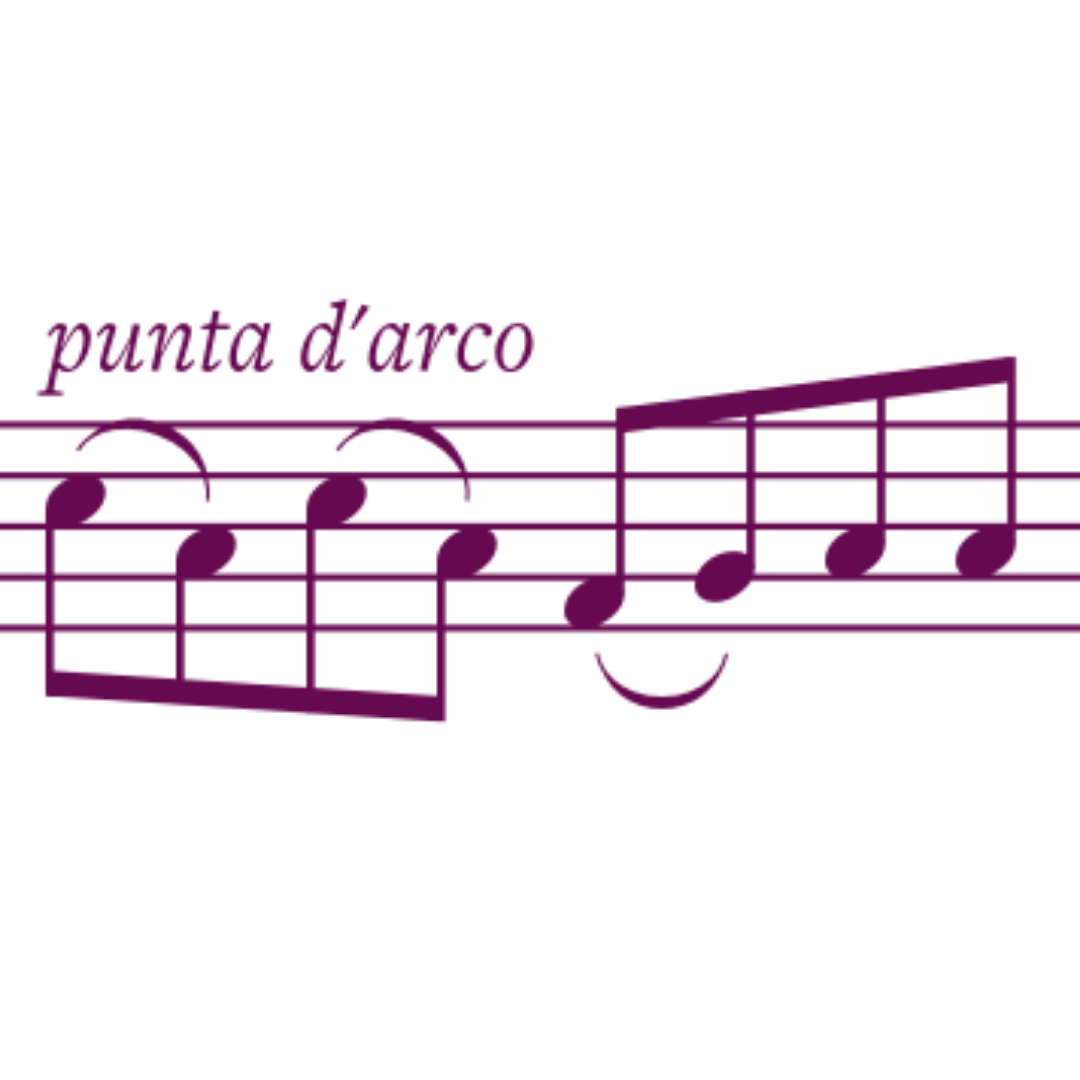
Punta d’arco
This means playing at the extreme tip of the bow. It creates a soft tone.
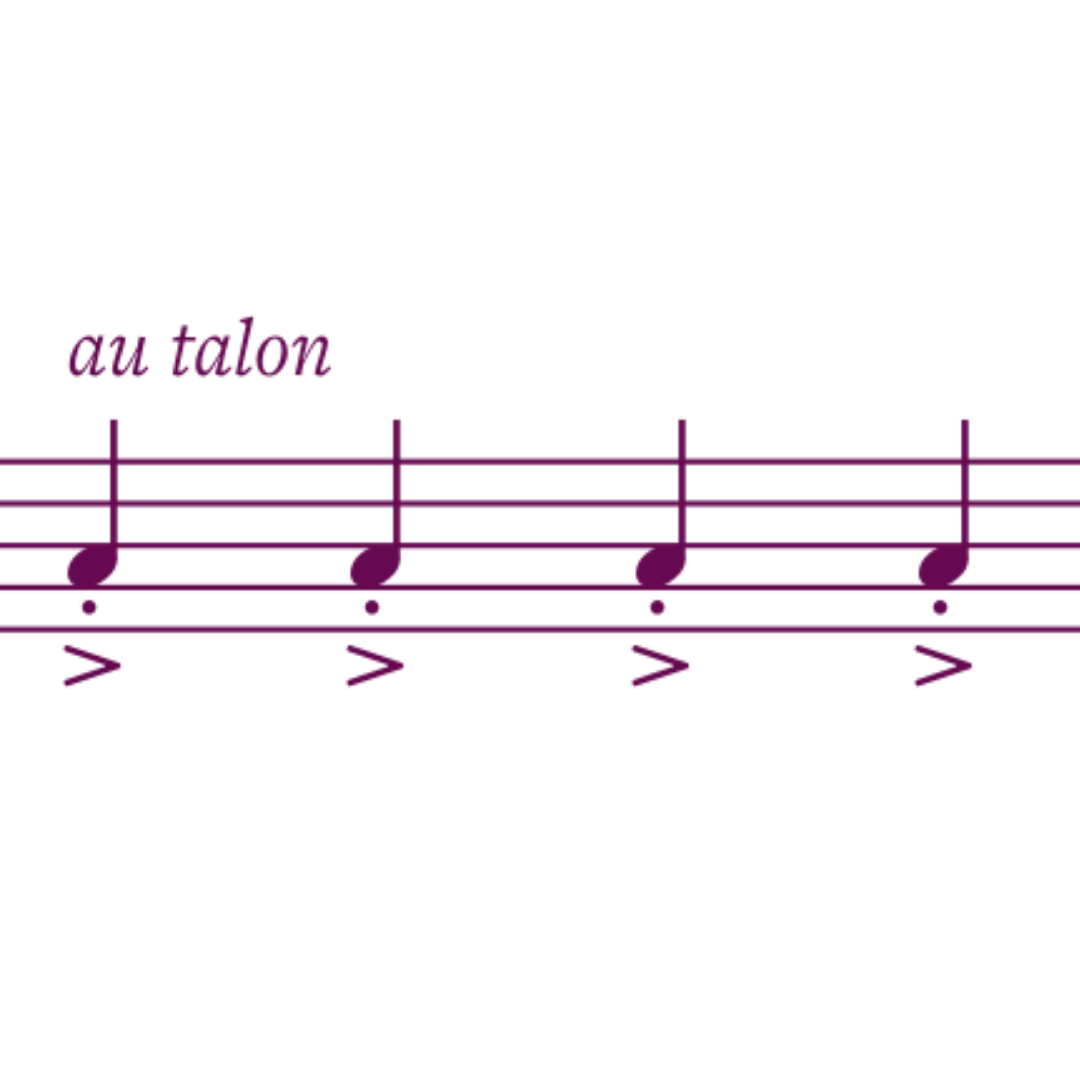
Au talon
This means to play at the frog of the bow. This creates a firm tone.
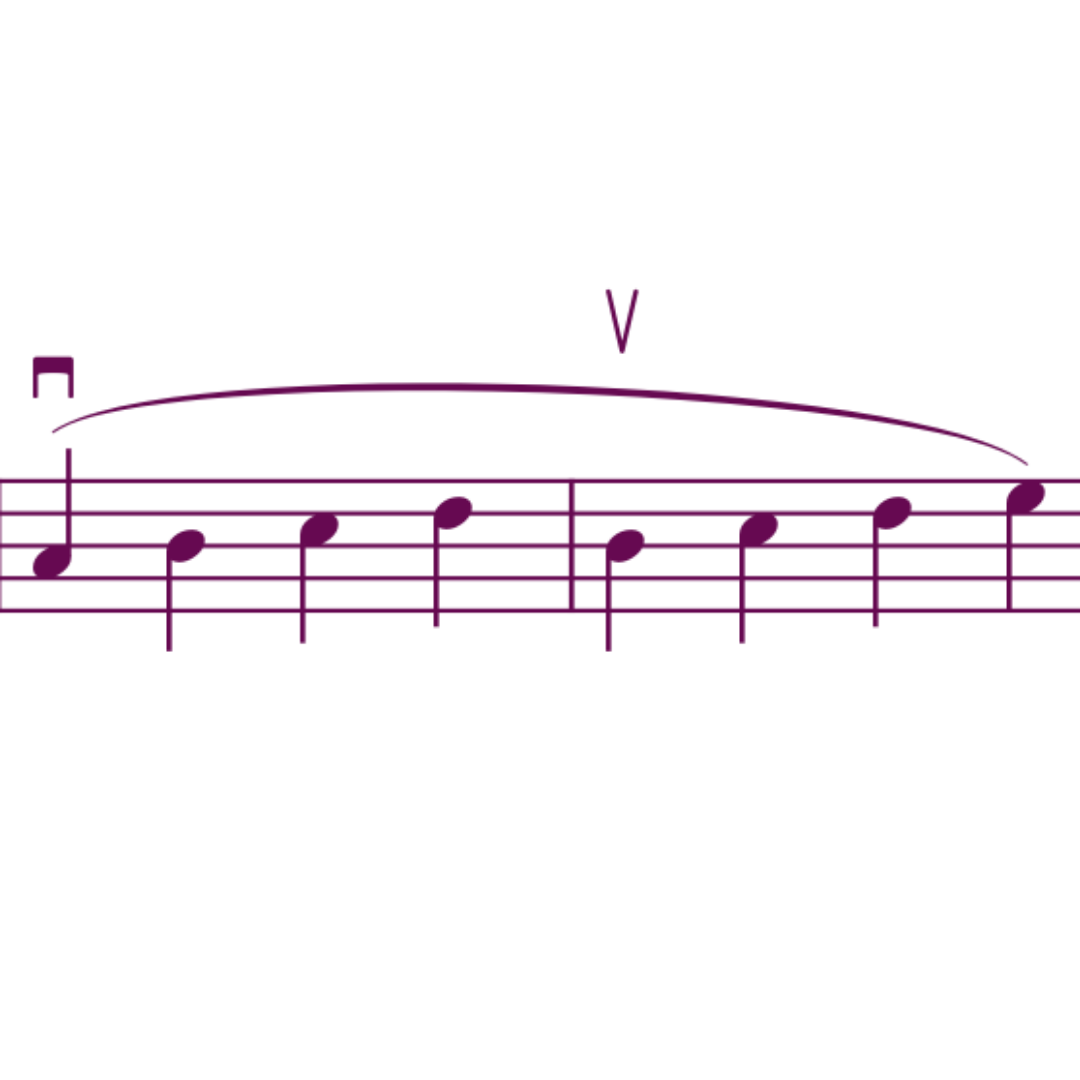
Divisi bowing
This means that within one section in an orchestra (first violins or second violins) the bow strokes are different. This is done to bring out notes under a long slur or when an extended phrase needs hidden bow changes.
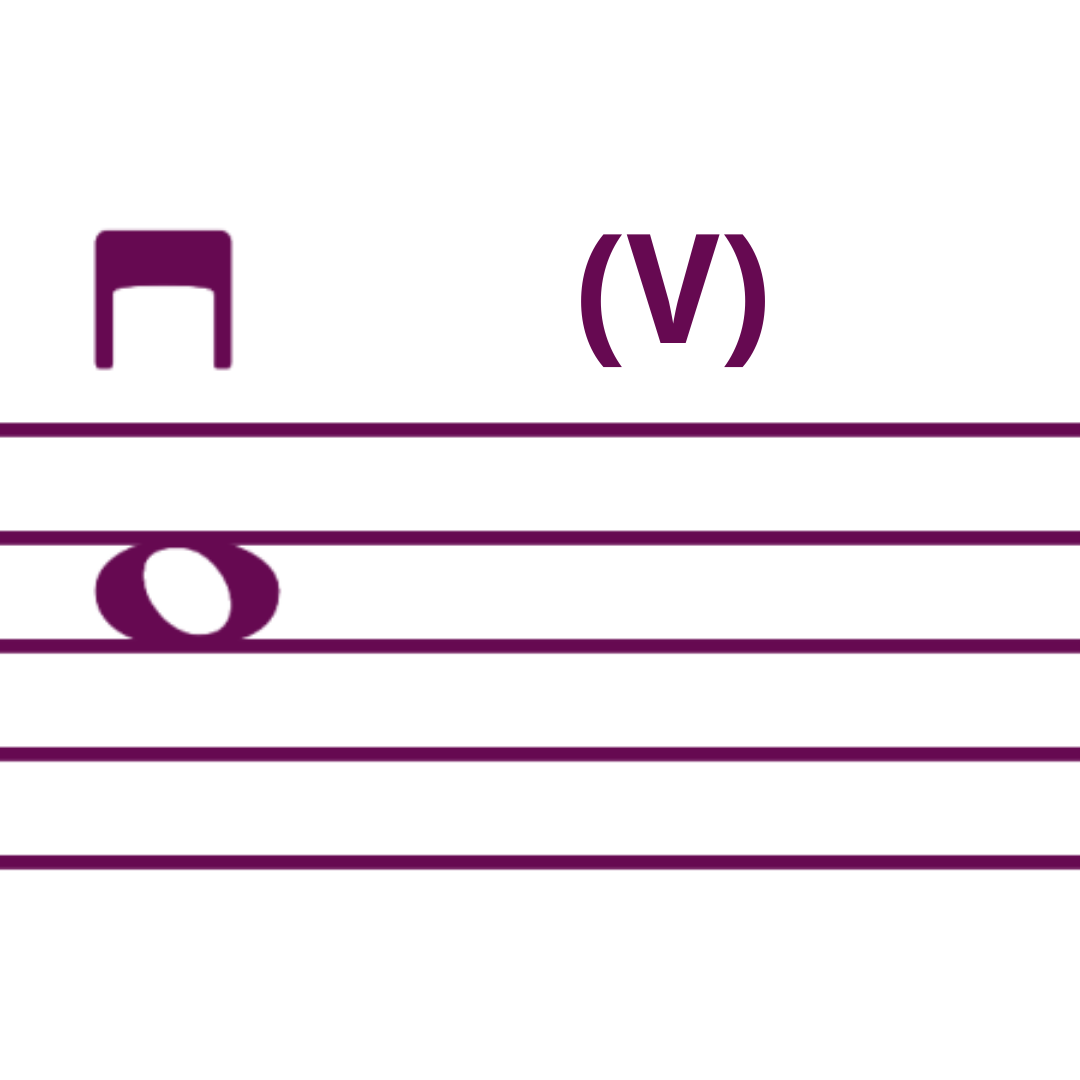
Staggered or free bowing
This is the effect of changing the bow direction within one note randomly to create the effect of a continuous sound.
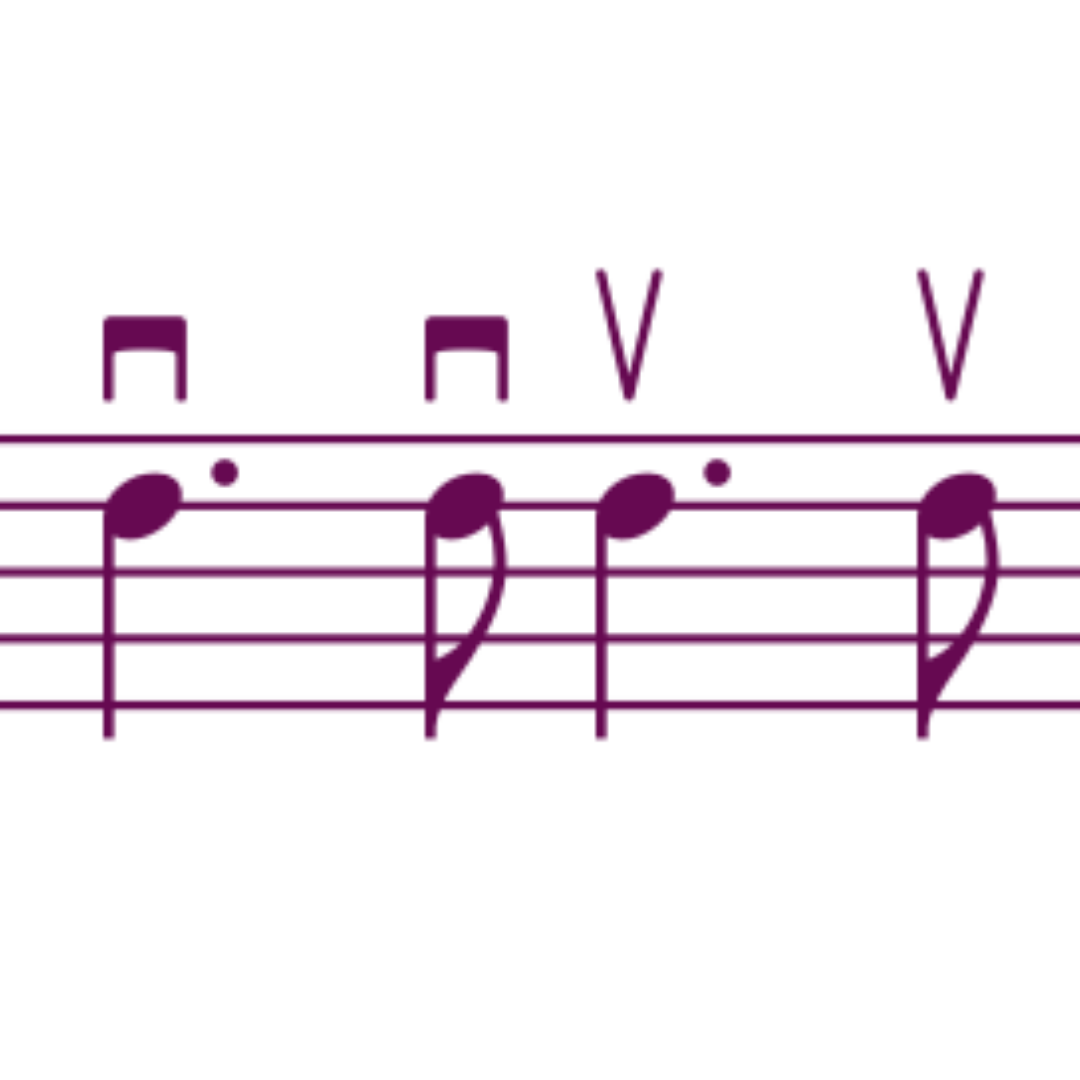
Hooked bowing
This is not a bow technique as such, but the practice of connecting a series of uneven note values in order to avoid unintended accents. This can be applied with detaché lancé, martelé, staccato or portato strokes.
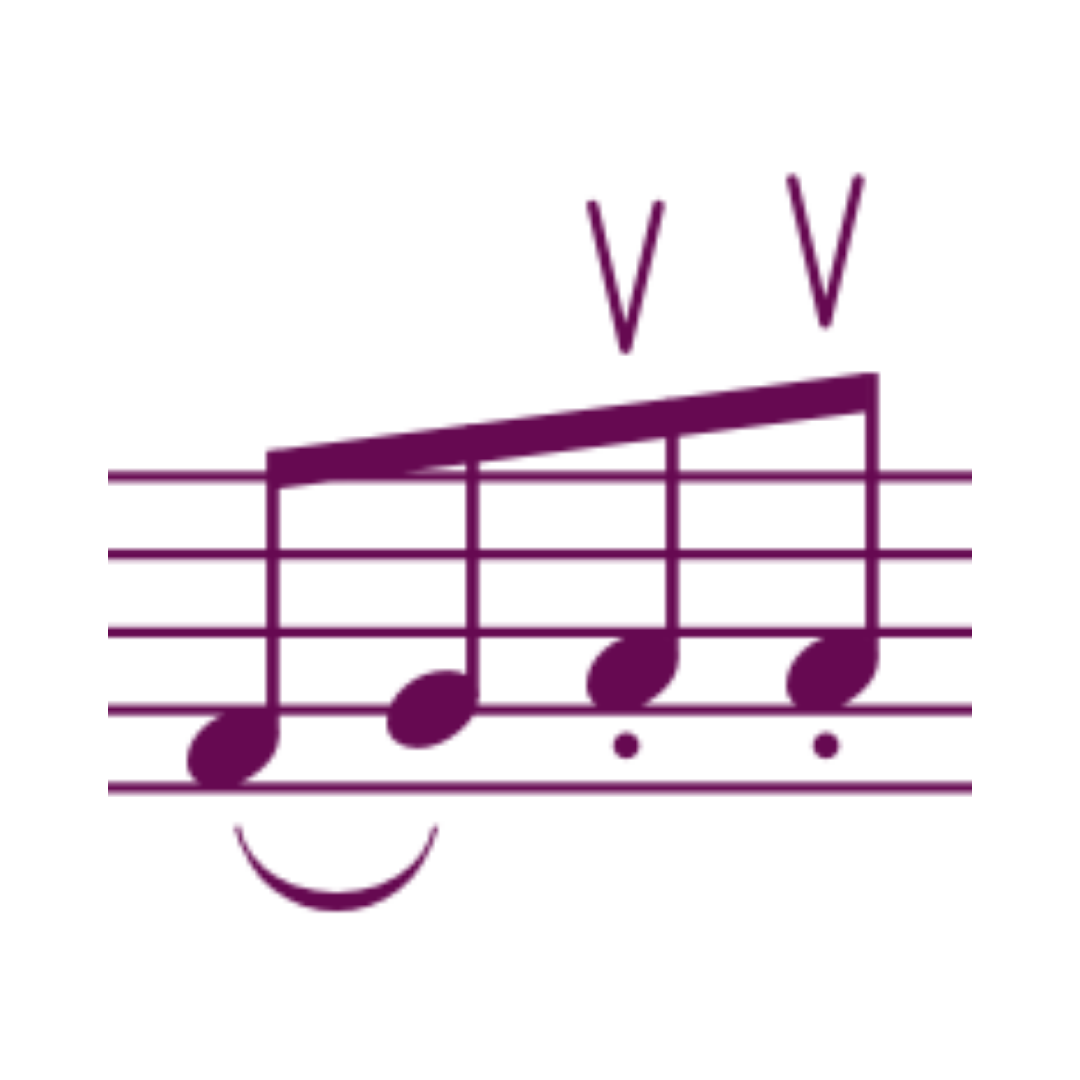
Classical motif
This terms is not a separate bow technique, but more the practice to play series of one longer bow stroke and two shorter bow strokes as down up up instead of down up down. This is easier to play in a high tempo and the articulation is cleaner and crispier.
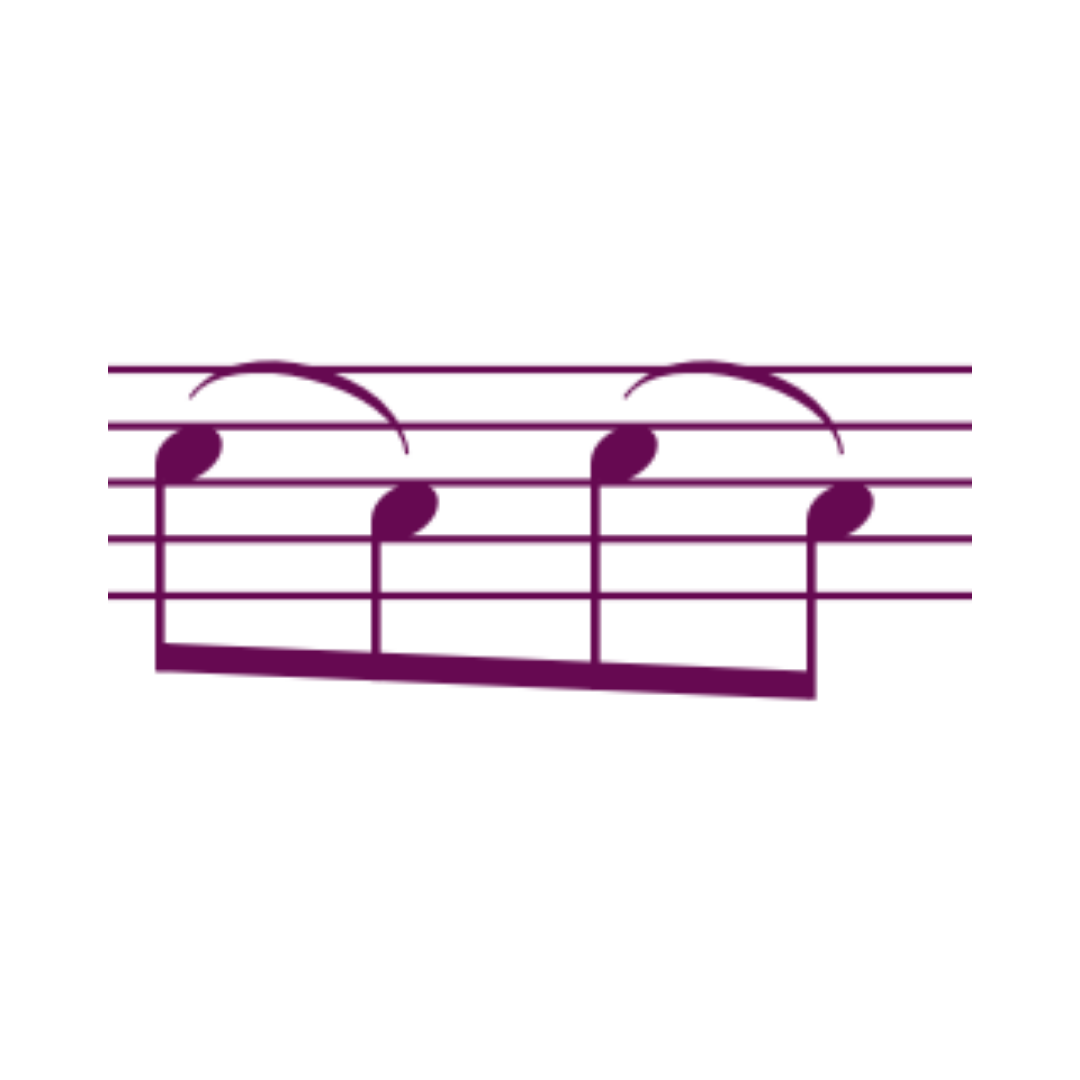
Seufzer motif
Two equal notes, where the first is emphasized and the second is softer and shorter. This creates the sound of a sigh. We hear this a lot in Mozart, orchestral as well as solo repertoire, and other composers from the classical era.
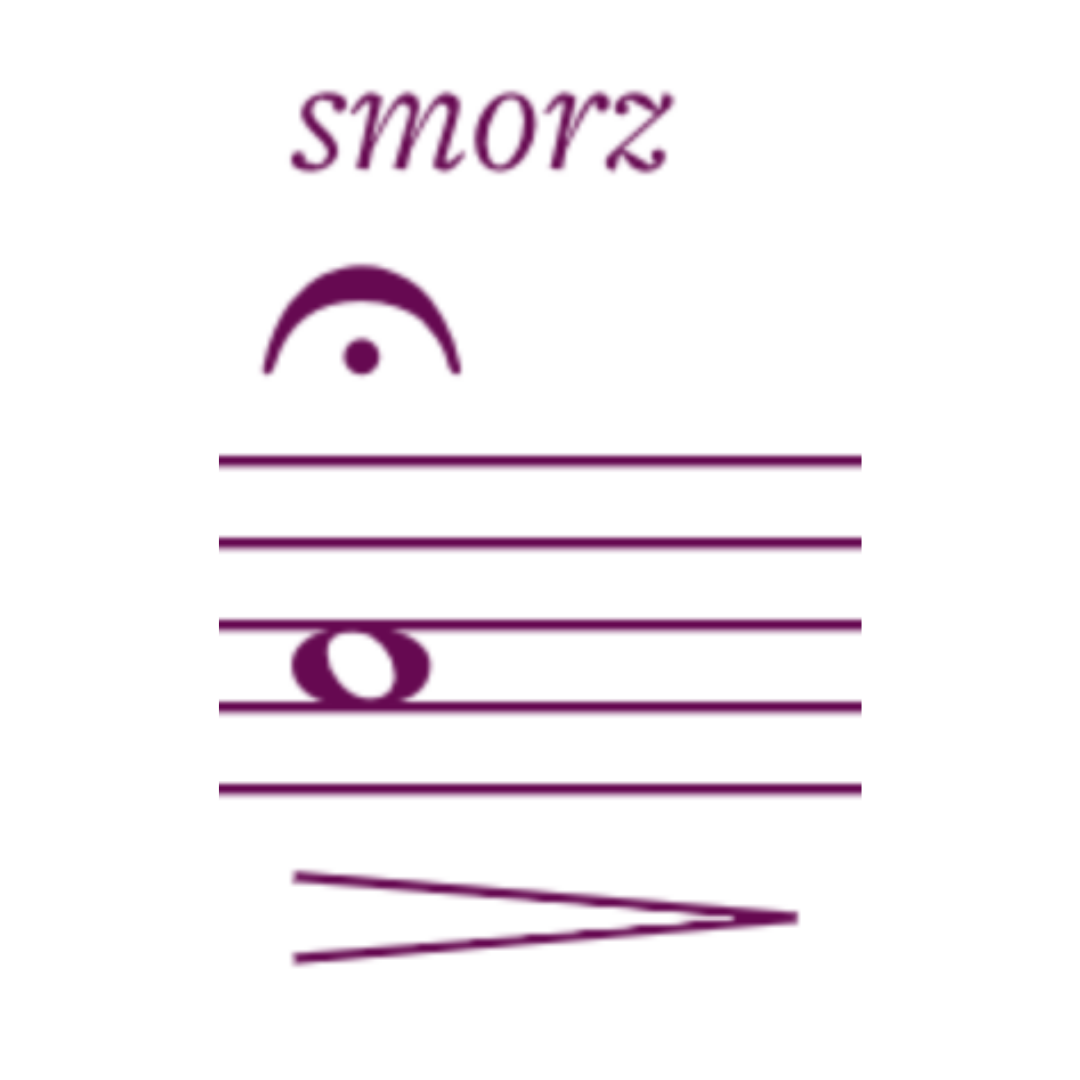
Smorzando or Morendo
Extinguishing or dampening; a drop in dynamics from soft to nothing. This is done with a very slow bow in the direction of the tip while taking weight off the bow.
Fiddle bow strokes
Except that a lot of techniques like accents, tremolo and slap strokes are also used in fiddle music, I’d like to point out some specific fiddle bowing terms.

Dragging the Bow
Classic jazz and Western swing players would play quadruple stops by completely unscrewing the bow and wrapping the hair over all four strings.
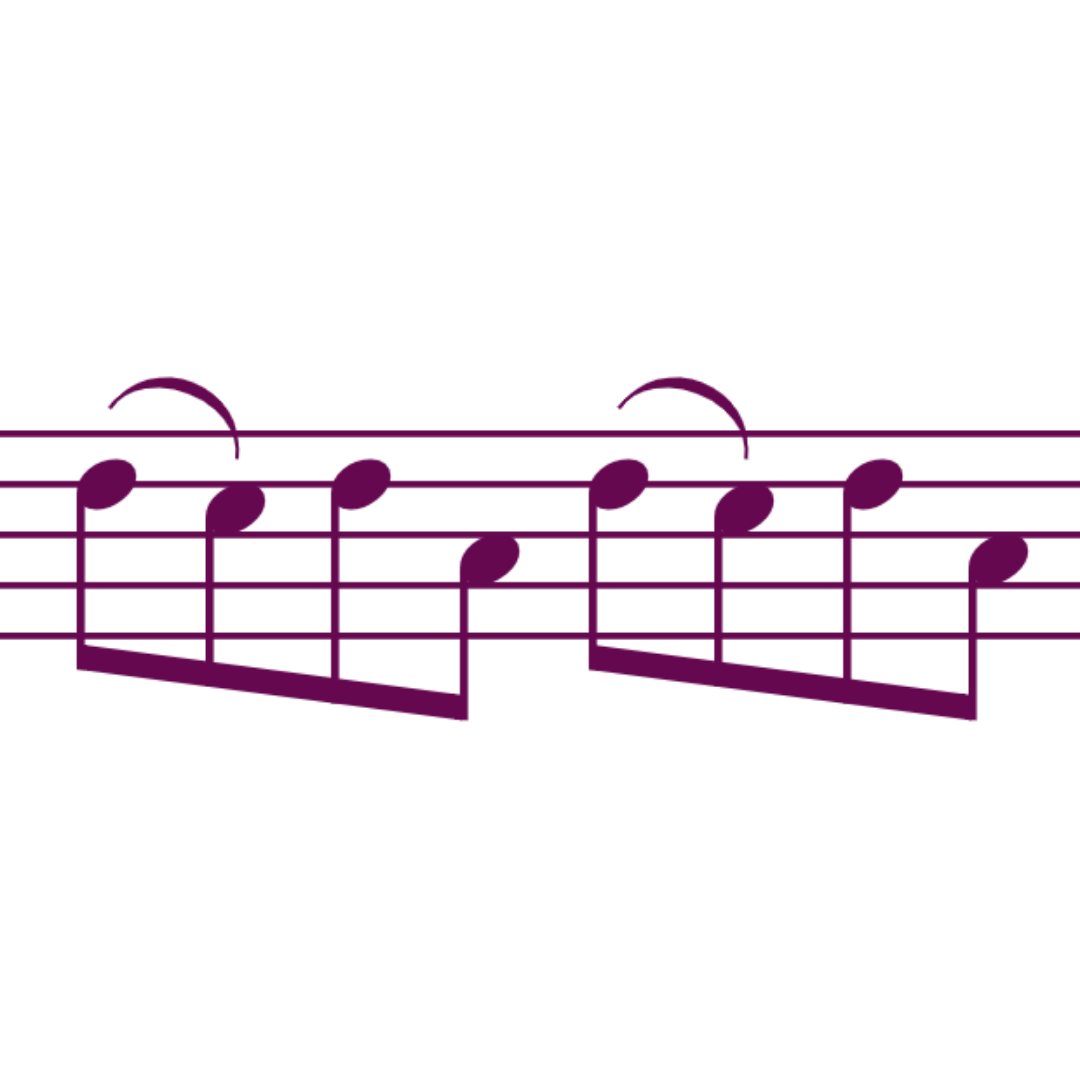
Shuffle
Shuffles, like the Nashville (picture) and Georgia shuffle, are bowing patterns in fiddle music. These are alternative ways to play the same tune or sequence of eighth notes.
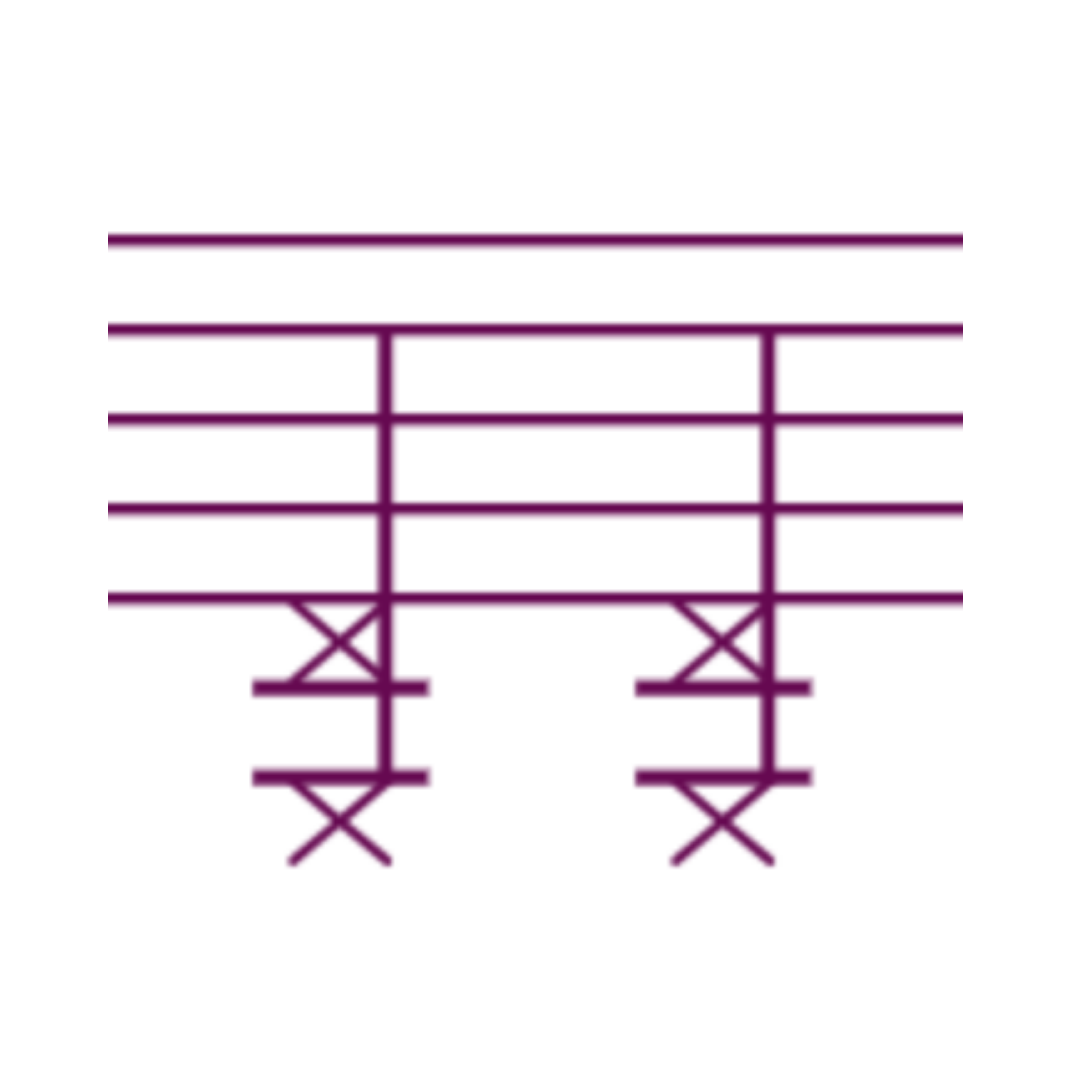
Chops
This is a fiddle bow technique, where you make percussive sounds by vertically landing (chopping) the bow usually on two strings. This is done at the extreme frog of the bow. By using a different angle of the bow, one can change the sound.
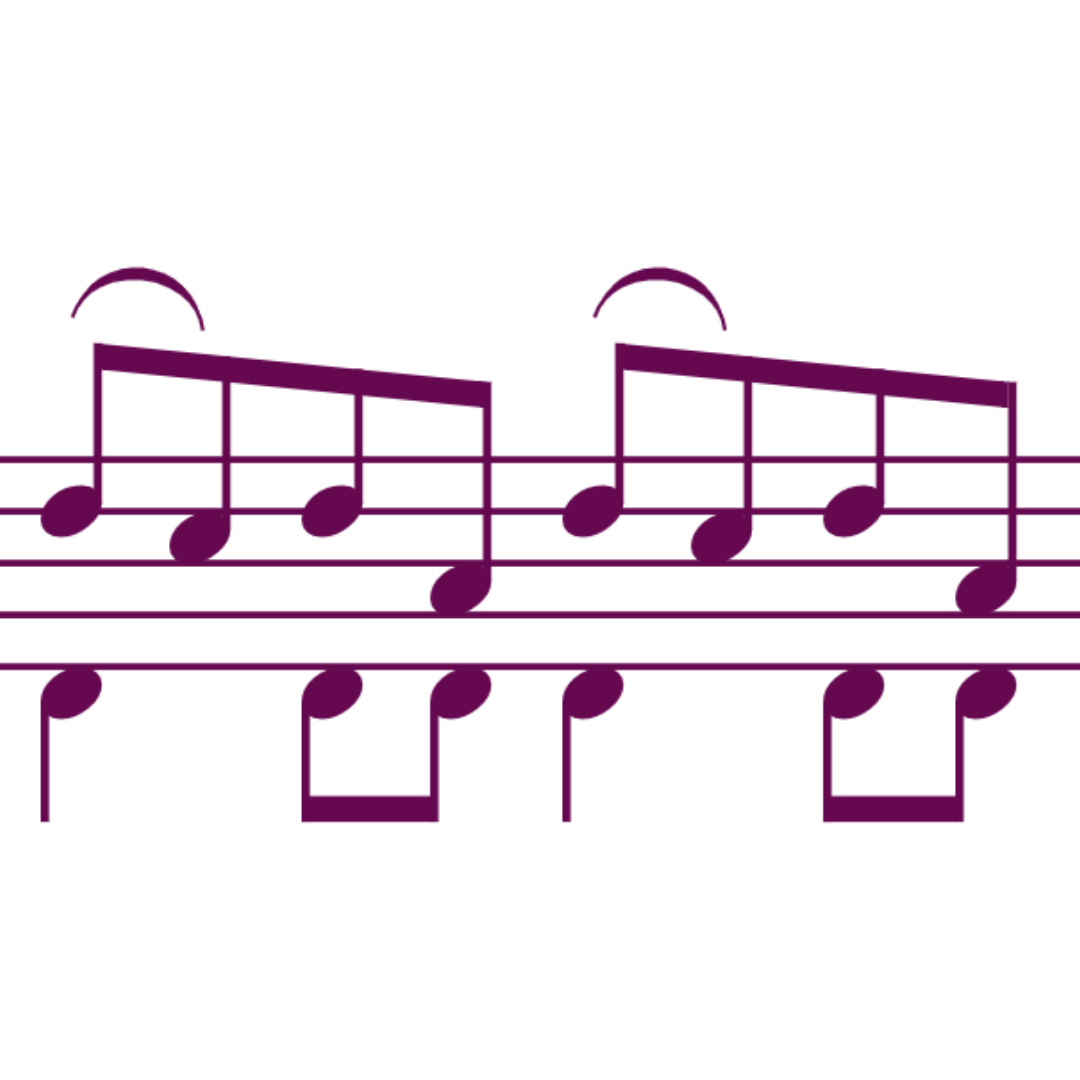
Drone
A drone is a specific type of double stops in fiddle bowing, where you play the melody on one string together with a lower open string. The lower string is the ‘drone’. Mostly drones are not indicated in the sheet music, but added by the performer.
Modern extended bowing techniques
In modern (or avant-garde) music extended techniques are used like tapping with the fingers, slapping the strings, scratching with the bow and knocking the instrument. I’d like to show you some fun extended bowing techniques.
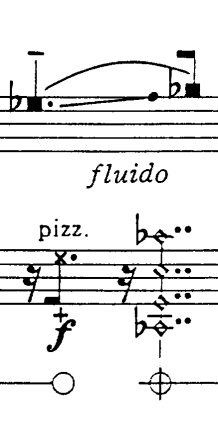
Bow screw glissando
Hold the bow vertically above the string with the screw against a string. Now pizz with your left hand and drag the bow screw up and down the string.
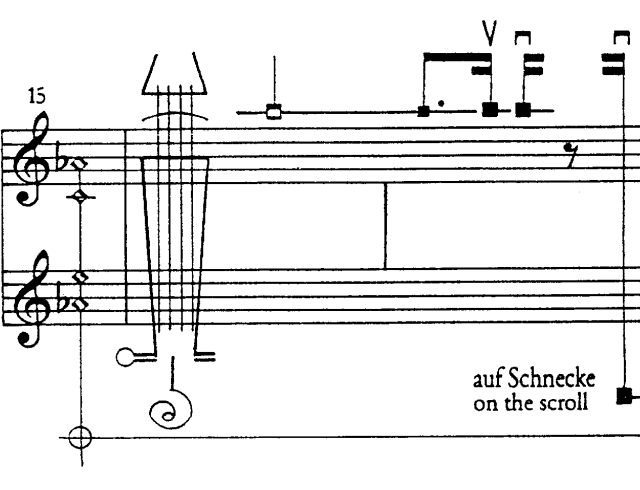
Bowing on the violin body, bridge, tailpiece or pegs
So old fashioned to bow on the strings! In modern music pieces are composed in which you’re supposed to bow on the body, bridge, tailpiece and even the pegs.
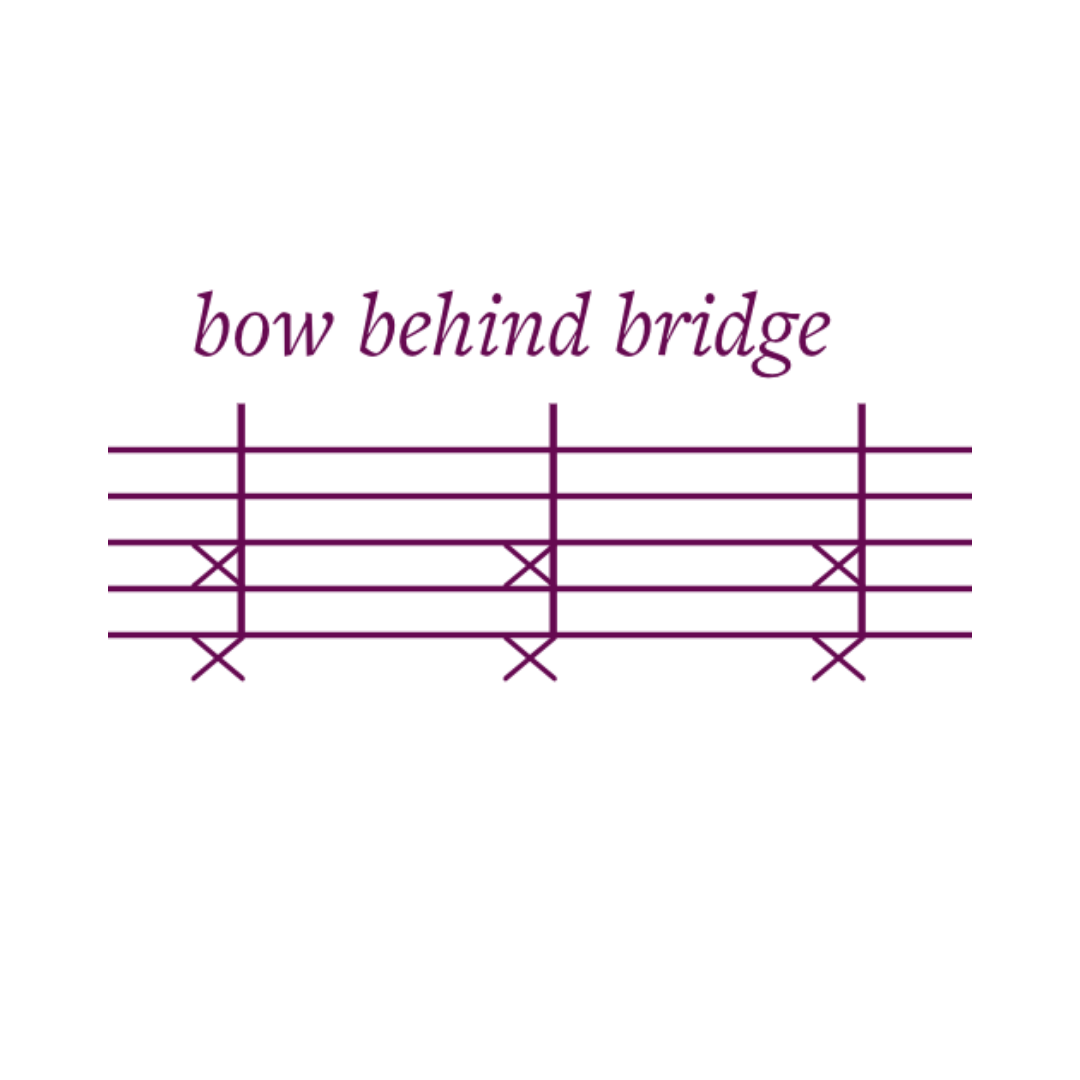
Bow behind the bridge
This is bowing on the short string length between the bridge and the fingerboard. The sound is very high and squeaky.
Violin Plucking Techniques
Without the bow we can make sound on the violin in the form of strumming, plucking or slapping the strings.
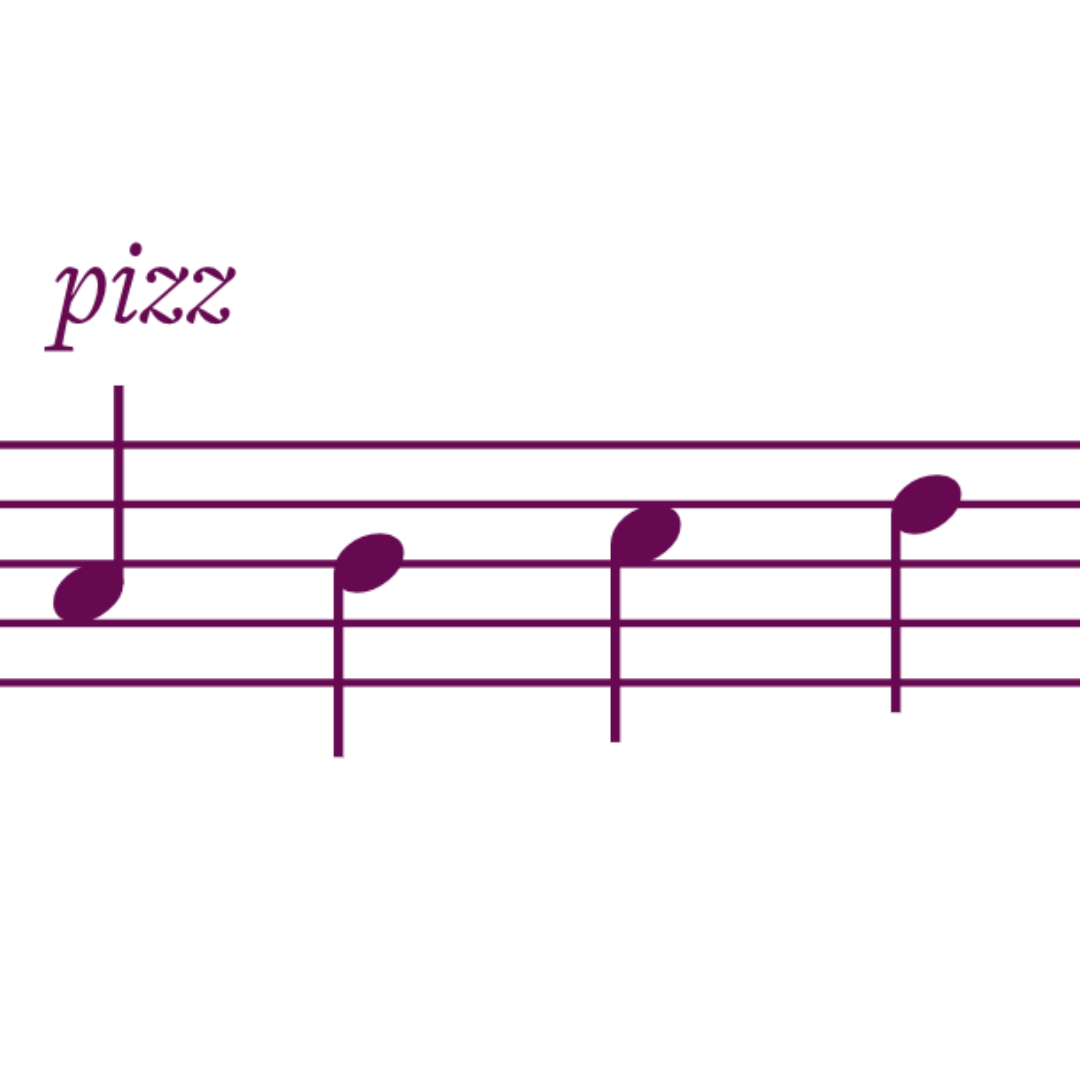
Pizzicato
Pizz is short for pizzicato, which means plucking the strings. Arco means to start bowing again. In some orchestral works there are quick switches between pizz and arco. Depending on how often and quickly one must switch the bow is held in the bow hold with the index finger sticking out or the frog of the bow is held in the fist.
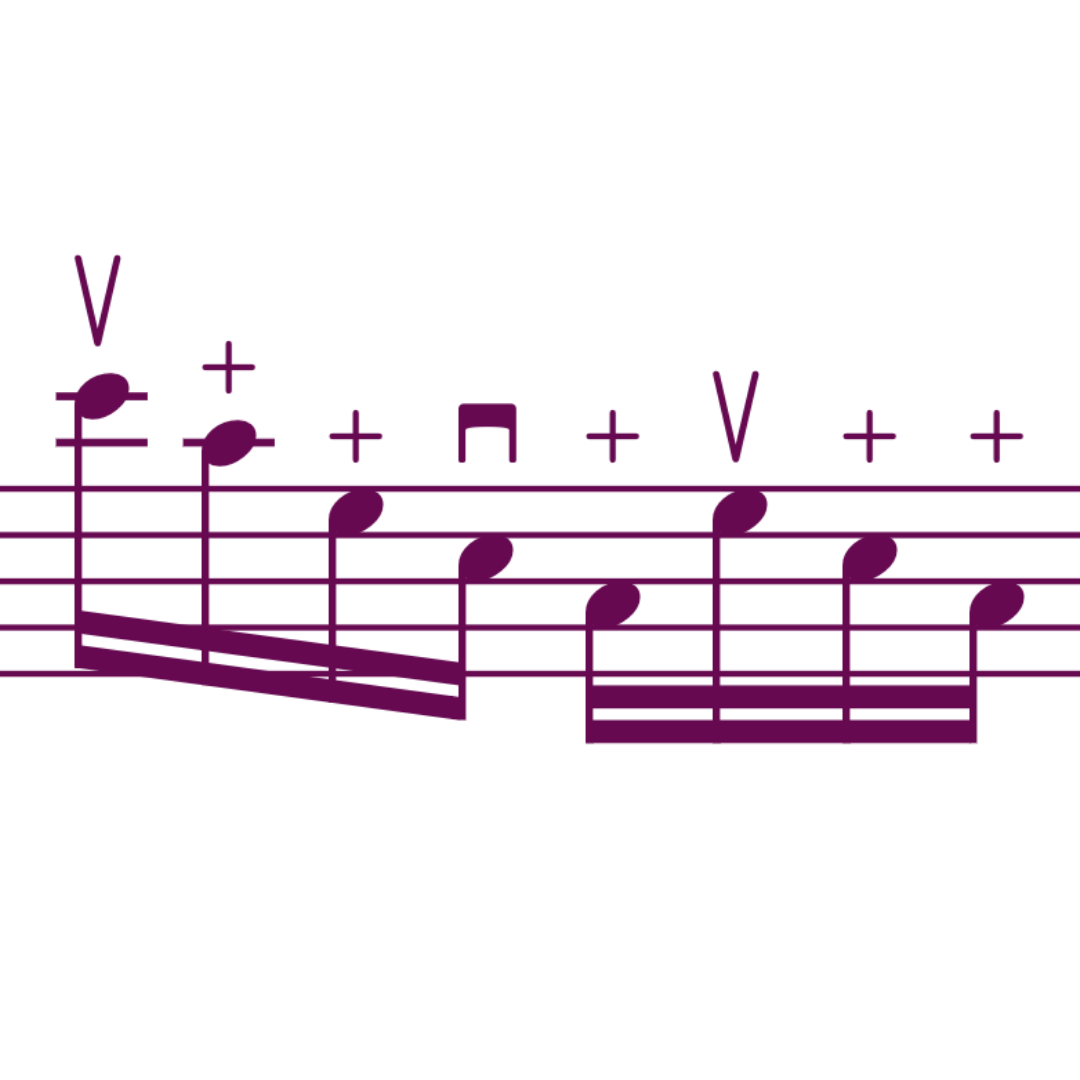
Left hand pizzicato
While playing stopped notes with the left hand, the other fingers can be used to pluck the strings. With left hand pizzicato it’s possible to switch very quickly between arco (bowing) and pizz (plucking).

Pizz without bow
In longer sections or even whole movements of pizzicato, the orchestra violinists put their bow on the music stand and have their right hand free for pizzicato.
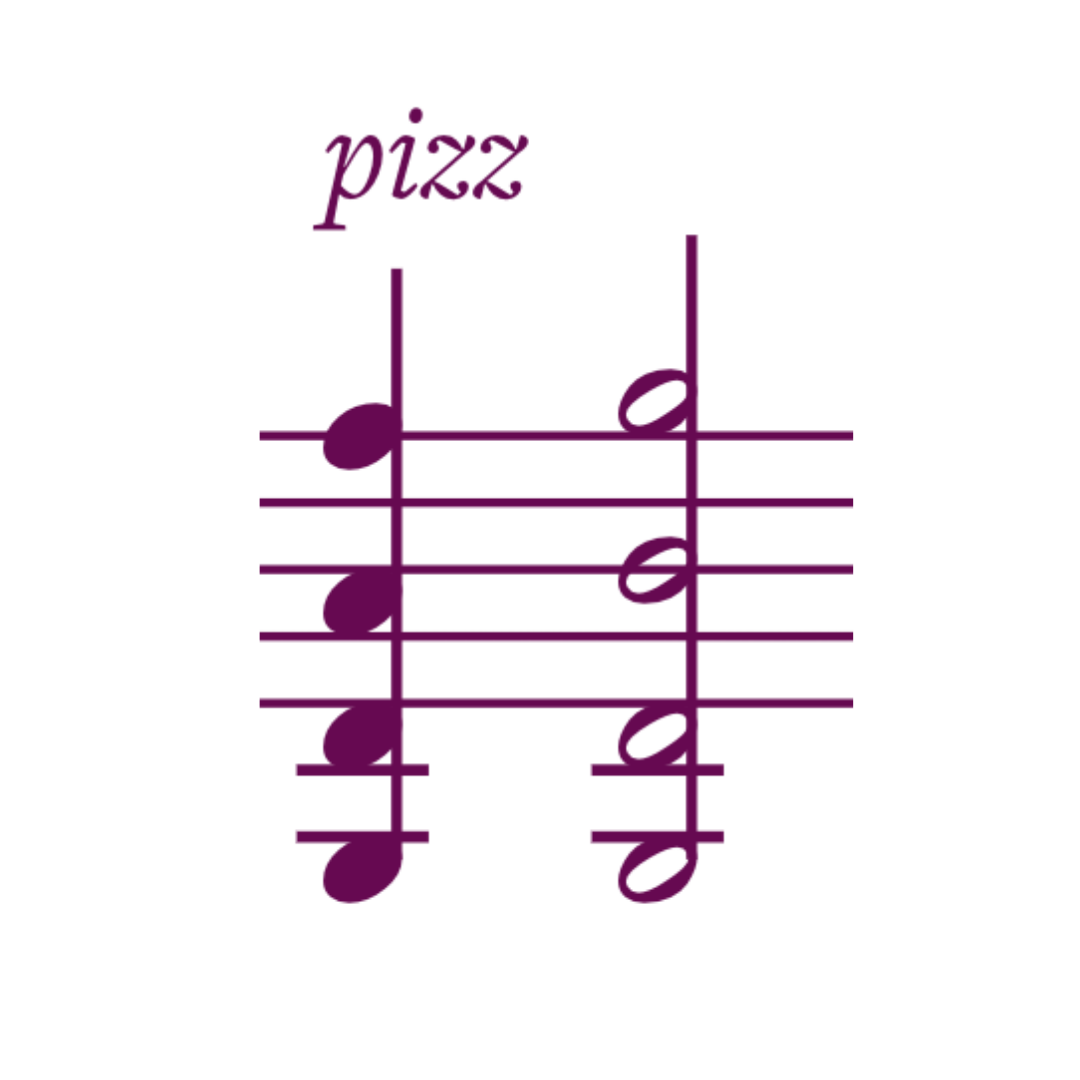
Pizzicato chording
We can arpeggiate the strings with pizzicato as well. This is similar to the strumming.
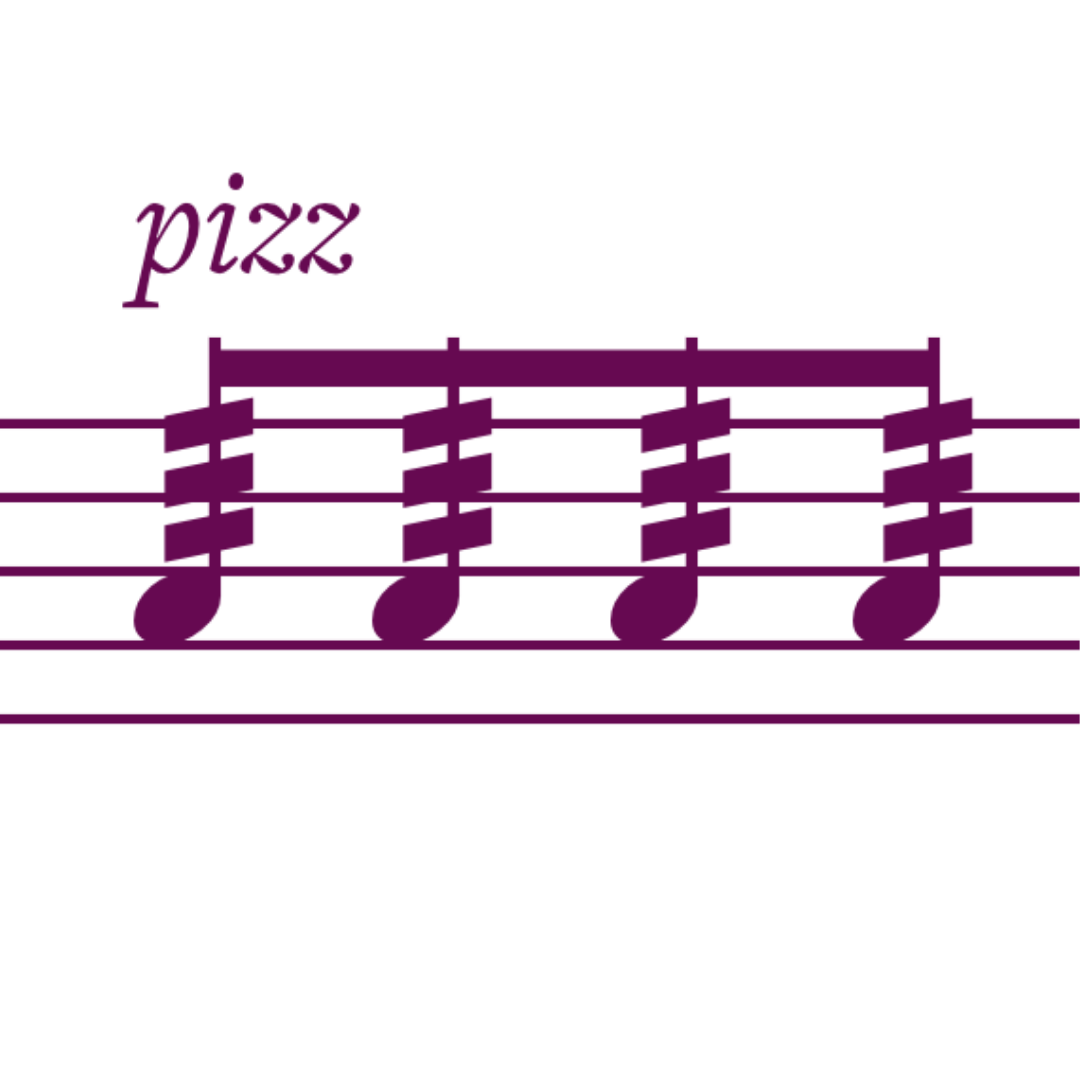
Pizzicato tremolo
The finger moves back and forth to create a fast pizzicato.
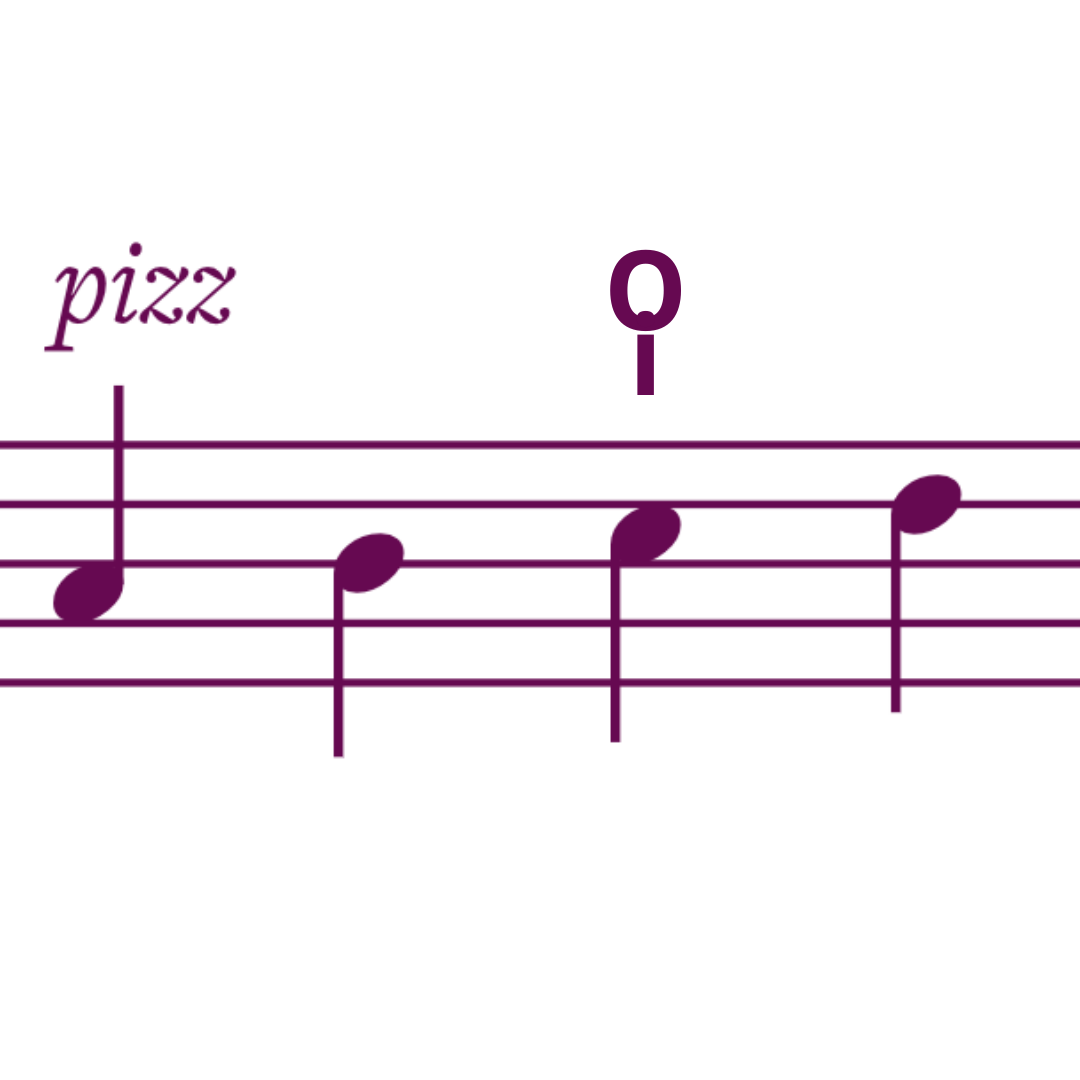
Snap (‘Bartok’) pizzicato
The string is pulled so far that when it’s released it snaps against the fingerboard. One hears a ‘snap’ more than the actual note. This is a percussion technique.
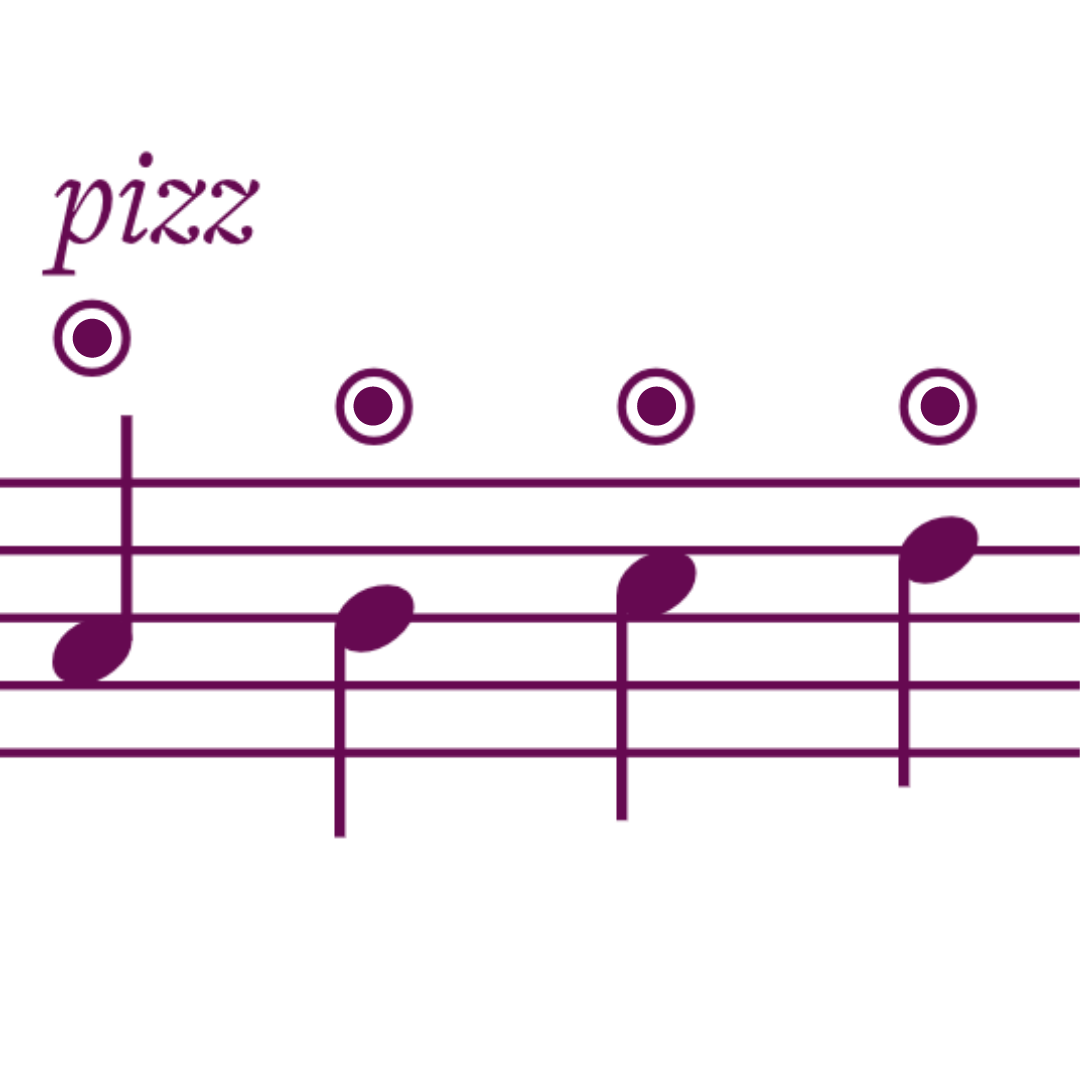
Fingernail pizzicato
Very hard for violinists as we tend to keep our nails short. The strings are plucked with the fingernail of the right hand.
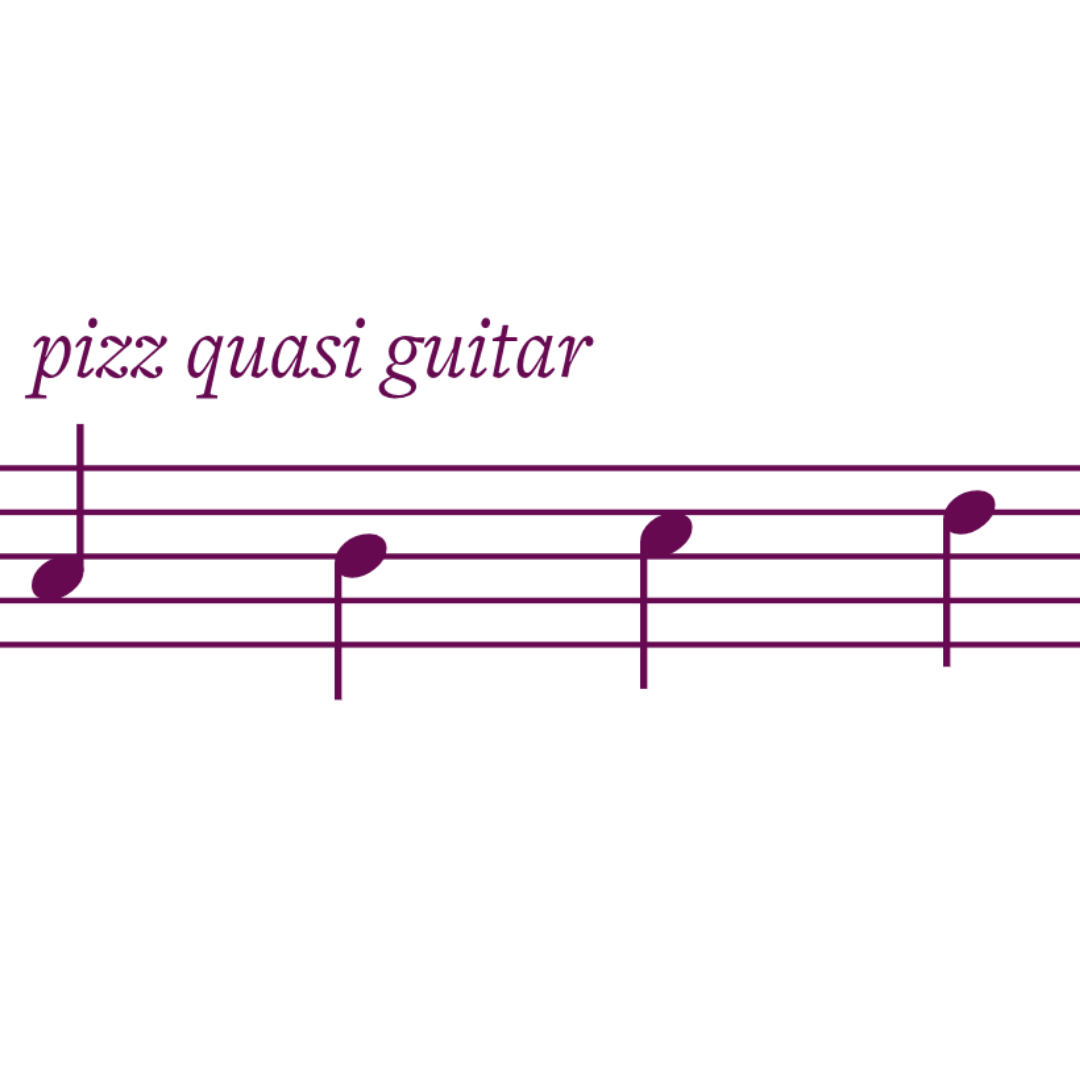
Quasi guitar
The violin is held like one holds a guitar and one plucks with the thumb instead of the index finger.
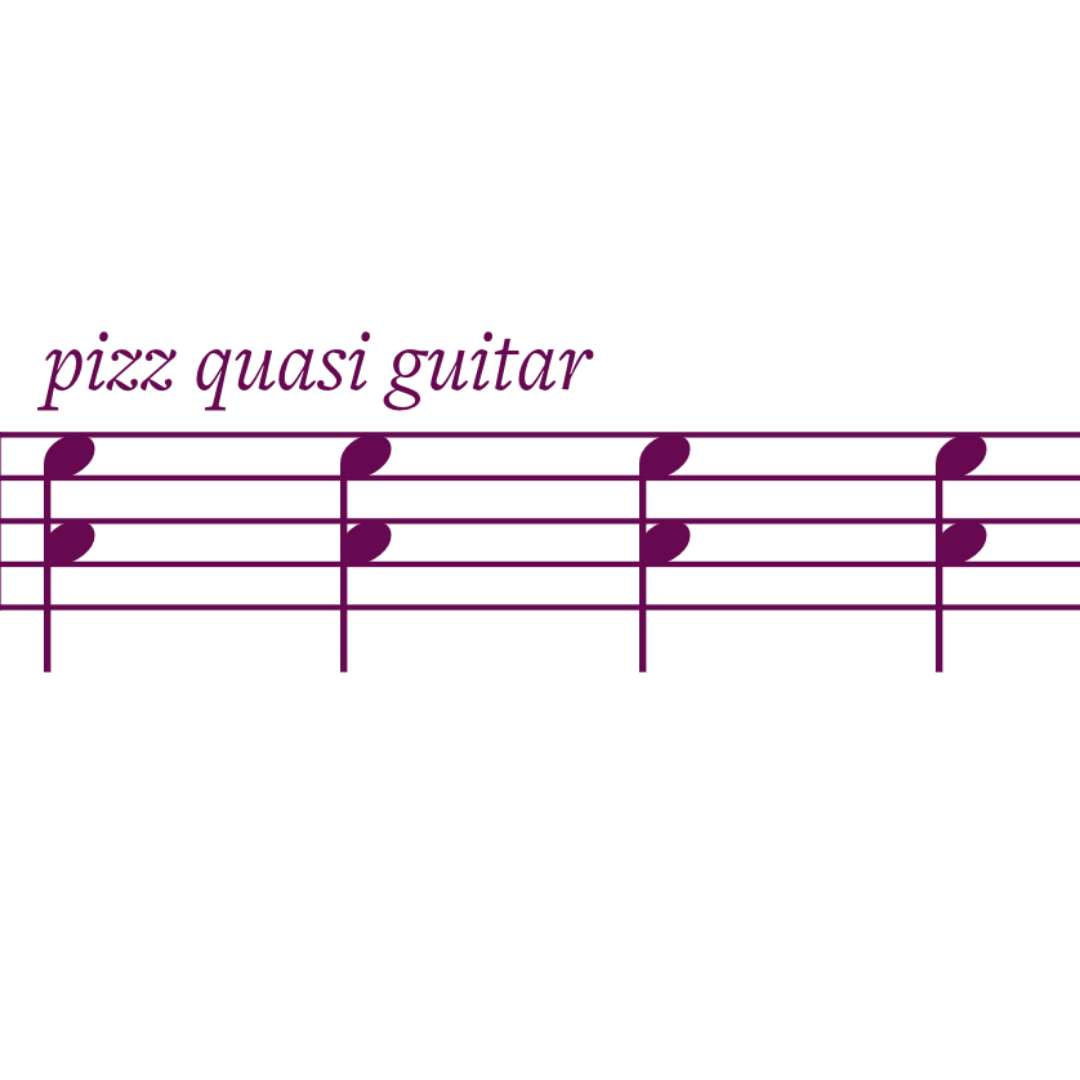
Strumming
One holds the violin like a guitar and in one move with the hand multiple notes are played.

This is just superb !!!
Thank you, Yona, glad it’s interesting!
Wow, how many bow techniques, I didn’t know many of them, I loved.
Glad you like it 🙂
Is there a named distinction between bowing from frog to tip and bowing tip to frog? And what might be the reason to call for one or the other?
That’s up bow and down bow: https://violinlounge.com/up-bow-or-down-bow-what-violin-bow-direction-to-choose-violin-lounge-tv-300/
Can you tell me about slurred notes with a staccato/martele dot and also a tenuto line? I always thought this was how you indicate portato but am learning it’s just a tenuto line with a slur and without the dot. Thank you for your help!
I’d say it’s portato, but clearly separated. On faster notes it could be solid staccato. It depends on the context. Watch performances of the piece and see what performers do. It can also differ.
Hello! I’m not sure if you saw my email, but I would like to know if you are available for one-on-one lessons? Thanks in advance!
Sorry, not at the moment, but I do have some online courses available around violin bowing technique. Click here to read more.